the power of WORDS
THE N-WORD AT BRANHAM
There is not a more controversial word to Americans, but students are over its use at school.
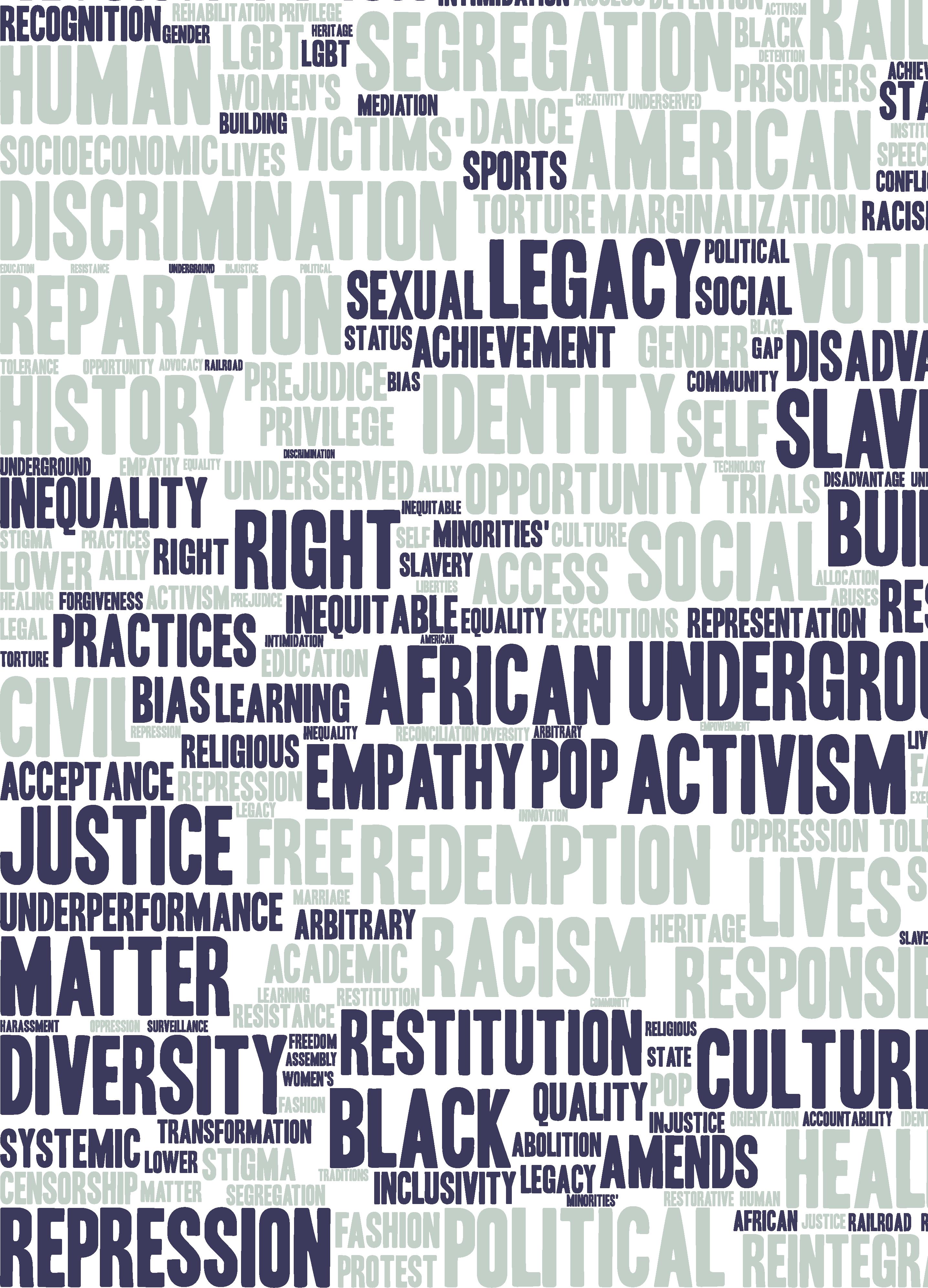
Pg. 2
HOMOPHOBIC LANGUAGE 'That's so gay' and other words are used without consideration of those in the LGBTQ comunity. Pg. 3
GETTING HELP
Students see unequal access to tutoring.
Pg. 3
RESTORATIVE JUSTICE
Building culture amid rising misbehavior. Pg. 4
HOT CHEETO GIRL

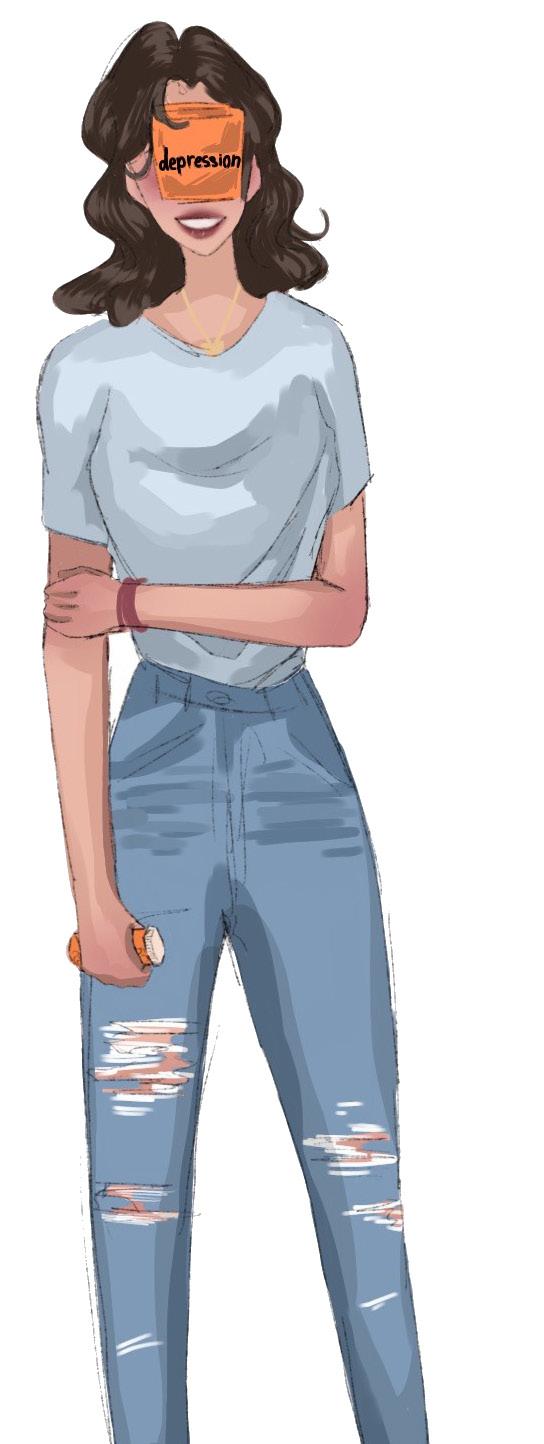

The stereotype is often a pejorative aimed at shaming Latinx students.
Pg. 6
Exploring the impact that a few simple words can have on others
IRAN CONFLICT Students and staff make connection to crisis.
Pg. 7
KILL YOURSELF
Mental health issues make it hard
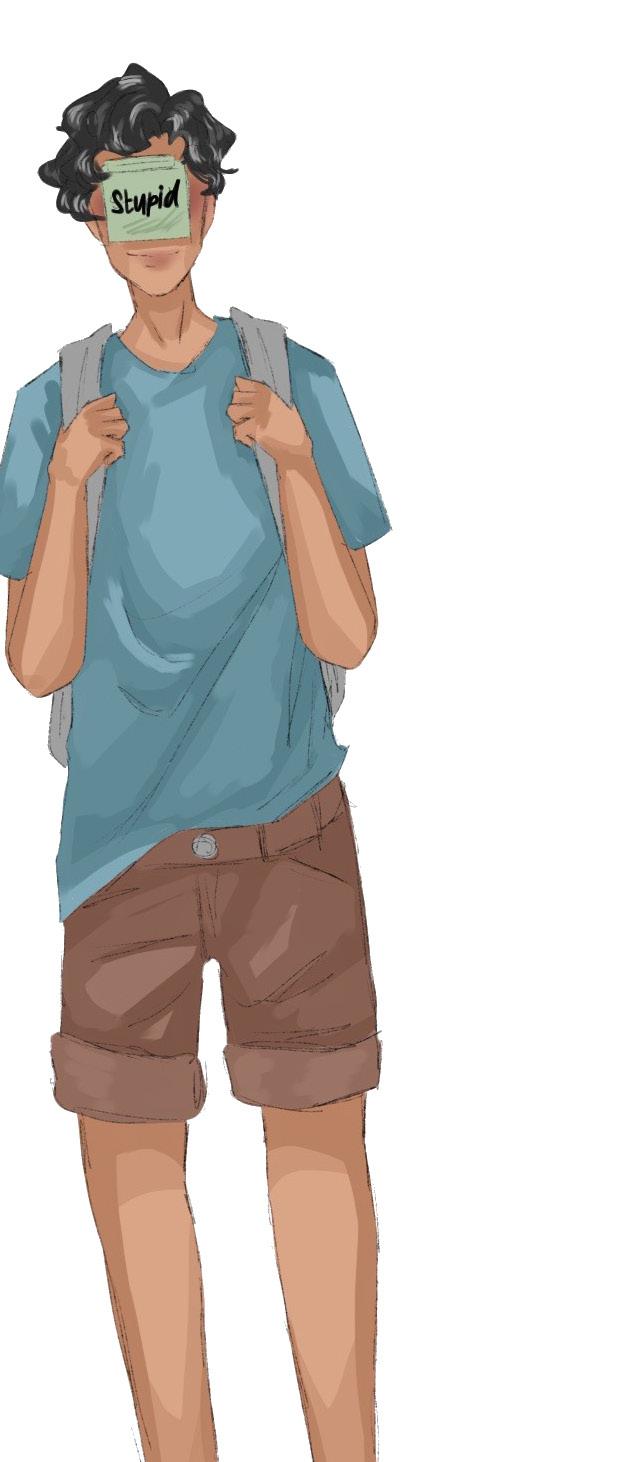
Pg. 8
ALSO IN THIS ISSUE NEWS
IN-DEPTHFENTANYL AT SCHOOL OPINION
SCI-HEALTH SPORTS
BACK PAGE
9
10
14
15
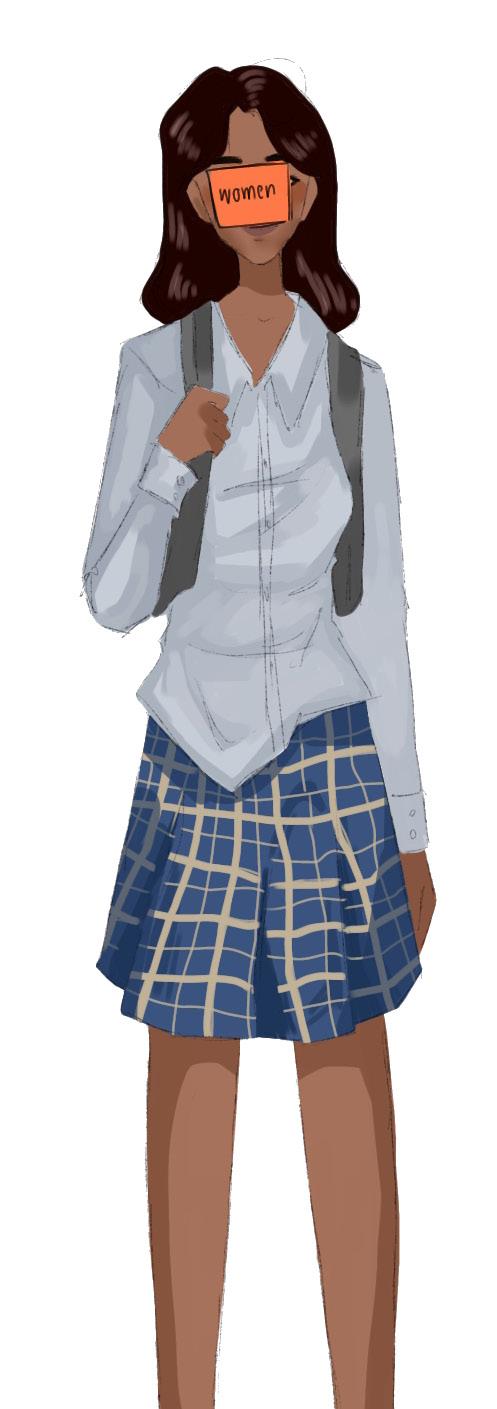
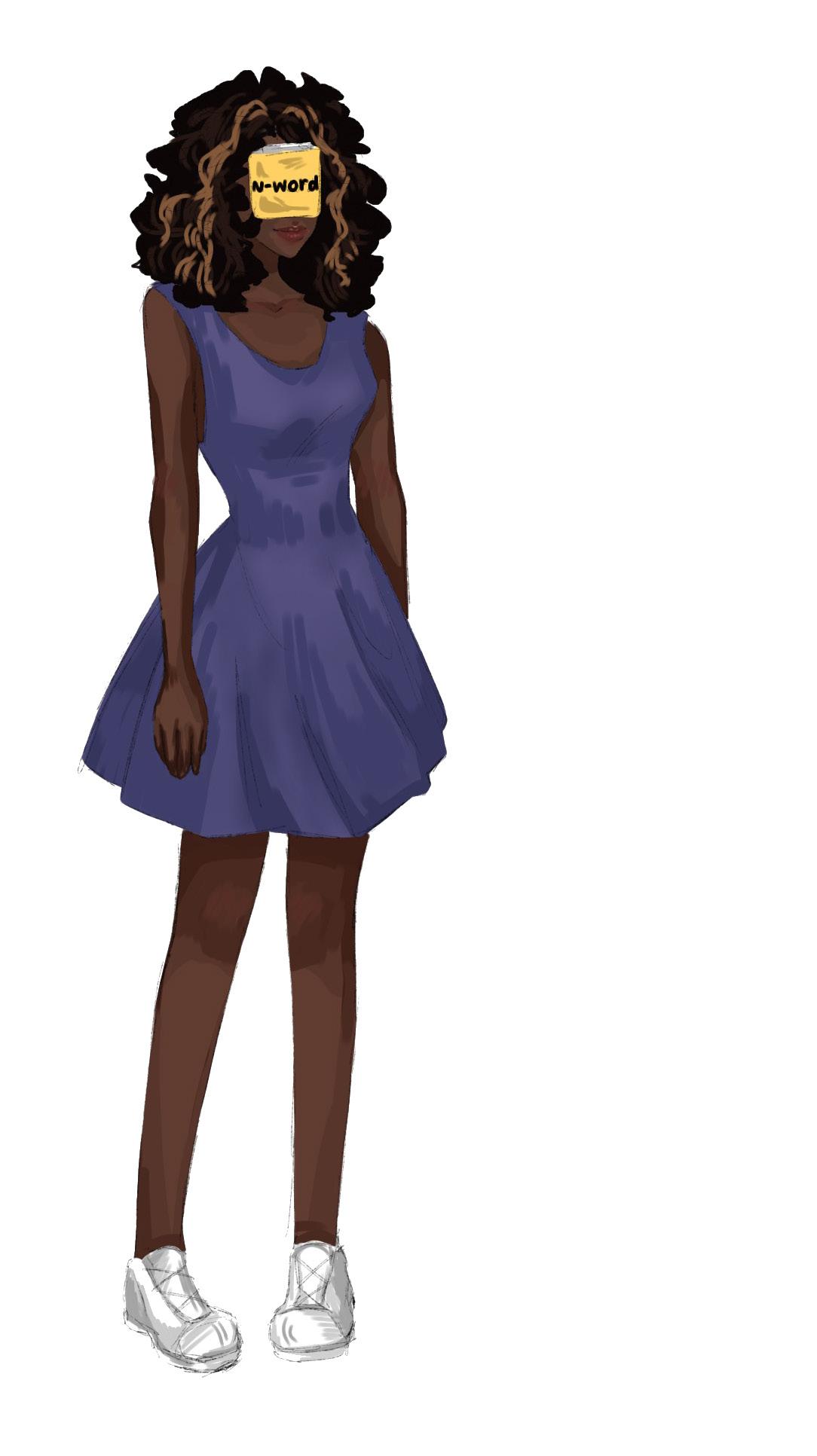
16-17
20
 Illustrations by Dhatri Tummala with inking by Grace Ngo
Illustrations by Dhatri Tummala with inking by Grace Ngo
THE POWER OF WORDS
N-word survey
A survey administered in December showed mixed feelings among students about the use of the n-word.
of the 365 students surveyed say that the n-word is frequently used on say that they feel uncomfortable when the hear the word, with 33.5% saying they sometimes feel uncomfortable.
Current use
Origins of a slur
The use of the n-word dates to 1619, connected to the first documented arrival of slaves from Africa to the United States. Africans on the ship were referred to as "negro," the Spanish or Portuguese word for "black," implying that they were not considered human beings.
Though students disagree on who should use it, leaders on campus say that it is not appropriate to use considering its history. According to the Pew Research Center, the term gained popularity in the late '70s and early '80s as hip-hop brought it mainstream.
The word is mentioned 500,000 times a day on Twitter.
Sources: BBC, Pew Research, Branham survey
the n-word
Staff Writer
n October, a sophomore student was recorded repeatedly shouting the n-word to a group of acquaintances. The incident took place off-campus and the video, widely shared in the Branham community, has sparked an uncomfortable conversation about race and the ownership of a term once used to degrade Black slaves.
The student, who is white, no longer attends Branham following outcry over her actions. Student feelings about use of the n-word are mixed. In a survey sent out by Assistant Principal Victoria Waite in December called Stopping the Normalization of the N-word, 75% of the 365 respondents reported that the n-word is frequently used on campus by both Black and non-Black students.
“I see lots of Hispanic students using the N word, and as a Hispanic person it makes me uncomfortable," said one student in the survey. "A Hispanic person does not have the same culture or experiences as a Black person and it is unnecessary to use the word either way."
However, 41% said that they do not feel uncomfortable or disrespected when they hear the word on campus, compared to 25.5% who say that they feel uncomfortable or disrespected, and 33% who say that they sometimes feel that way.
A majority — 65% — think administrators should take action against whenever the hear the word on camThe discomfort that Black students and staff feel about the n-word comes against its frequent use among students and in popular culture. They say that students lack an understanding of the origins of the word.
The n-word originated from the mispronunciation of the Spanish "negro," and historians trace it to the first slaves, referring to Black people as an inferior group. Though the n-word has been reclaimed, sociologists such as Brando Starkey say it only exists to be reclaimed because slave owners used it in the first place to subjugate them.
"We black folk are reclaiming it not from bigoted white folk but from our ancestors, who, sadly, deemed their blackness a badge of inferiority," he wrote.
'You're not calling them brother' Black Student Union adviser Tobias McLeod shares his family's near-death run-in with the Klux Klan, an American white supremacist hate group. The KKK had attempted to lynch McLeod's second cousin, and had beaten him almost to death.
The n-word was one of the last words that he heard while getting pummeled.
“These guys were basically jealous of him as an upstanding person in the community,” McLeod said. “It just completely messed up his face for the rest of his life.”
McLeod believes that based on his upbringing and history, the n-word is not a word he wants in his vernacular.
To students who say they are reclaiming the n-word, McLeod said that they can’t change or erase the history that is behind a word.
“Whether you are taking it back or not, you are saying it and you don't know the impact it’ll have on another person,” McLeod said. “You're not calling them brother. You're not calling them sister. You're not calling them by their name. You're calling them this other thing that has this negative history.”
Zoom-bombed with hate speech
McLeod and student leaders such as BSU co-president Jeda Awuzie believe that non-black people are using the n-word on Branham’s campus and they wish admin and students would speak up more when they hear the n-word being used.

Administrators say that they have been holding discussions at staff and district meetings regarding disciplinary actions and interventions involving hate speech and slurs. Student groups such as the Black Student Union, the Student Equity Team, and Leadership are involved in the steps as well.
Still, senior Diane Rose Fonkwo said that there is a long way to go until students realize the harm of their actions in so easily resorting to the n-word.
She had attended Black History Month webinar when white students interrupted the discussion and called the black students the n-word as well as other racial slurs. She said that they they draw swastikas on the Zoom whiteboard, and forcefully broadcast explicit video content.
“I was so incredibly upset and tired of being treated unfairly,” said Fonkwo. “It made me realize that there are still such large strides to do justice to the black community.”
'A life and history of its own' BSU co-President Jeda Awuzie's first experience with the n-word came in fourth grade. Fresh from Nigeria, she recalls students bullying her and calling her the n-word with a hard r.
In an essay she had written for Jeannine Black's Ethnic Literature class, she said though the word was new to her, she knew it had a negative meaning.
“I clung onto my desk — the only safe space — as my eyes grew hot and tears began to well up so quickly that it was impossible to blink them away,” she wrote.
As a young black woman, Awuzie doesn’t use the n-word as she believes that because the n-word had carried a dehumanizing meaning before it was reclaimed, so it’s not a word that empowers the black community. She values the color of her skin with greatness and Awuzie feels that the n-word doesn’t support that idea and instead goes against it.

“Being black isn't just something that I am; it is something that comes with a life and history of its own,” said Awuzie.
Awuzie said that her first experience with the n-word shaped her identity in America.
Her skin color would almost always be the characteristic people saw first in her, not her personality. She describes this phenomenon as a lens that people see her through, so she must also see herself that way too.
“I gained a greater sense of my place within the world," she said. "Prior to moving to the United States, I was always cognizant of my skin — how couldn't I be? But it has never shone so much like a badge as it does now that I live here.”
FEBRUARY 2023 | BHSBEARWITNESS.COM
ARESEMA ADGIE
[singular] a racial slur that has been historically used as a tool of oppression and hatred against Black people
Aresema Agdie/Bear Witness Black Student Union co-president Jeda Awuzie and adviser Tobias McLeod say the n-word has no place on campus.
Homophobic language
Homosexuality has been stigmatized and marginalized for centuries, leading to the creation of derogatory language and slurs used to denigrate individuals based on their sexual orientation. For example, the word "f----t" was used as early as the 16th century to refer to a bundle of sticks used for kindling, but by the 20th century, it had become a common slur directed at gay men.
Toxic masculinity
The use of homophobic language is often linked to toxic masculinity, which emphasizes traditional masculine traits such as toughness, aggression, and dominance. This can be seen in the way that words like "sissy" and "feminine" are used as insults, implying that anything that deviates from traditional gender norms is weak or inferior.
Unfamiliarity
GLAAD explains that people who are not familiar with or comfortable with LGBTQ+ individuals may use derogatory language as a way to distance themselves from what they see as a threatening or unfamiliar group. This can be compounded by the lack of education and awareness around LGBTQ+ issues and the stereotypes and myths that are often perpetuated in popular culture.
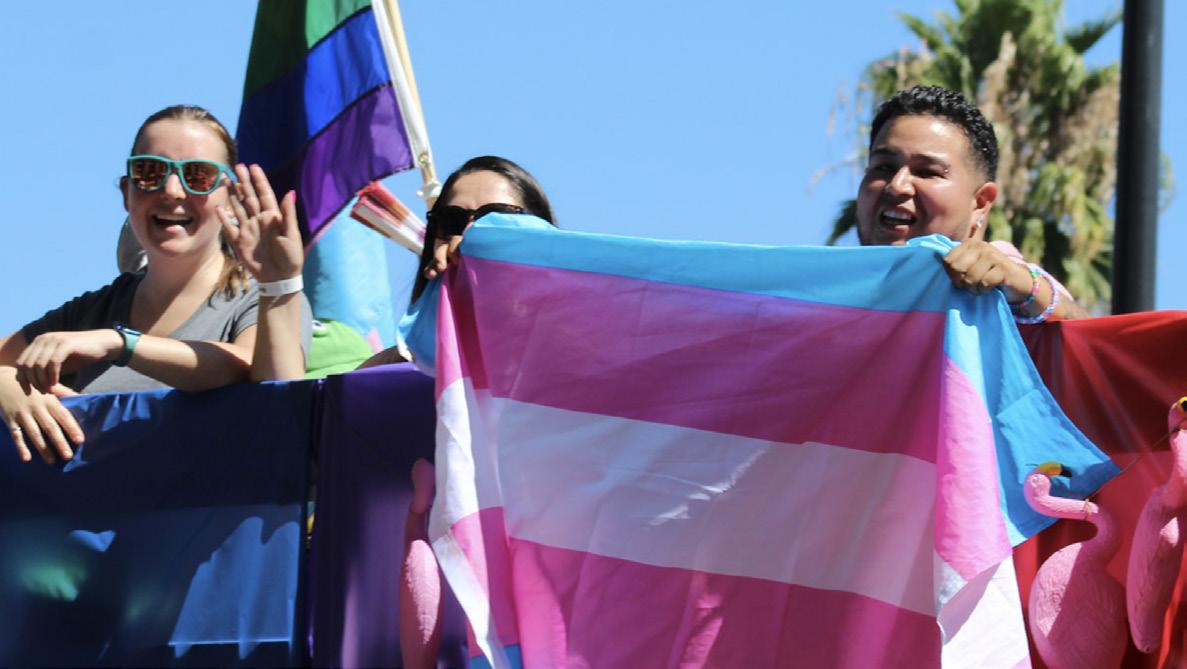
—Sources: BBC, Pew Research, Branham survey
that's so gay
AVA STARK Arts and Culture Editor
That’s so gay.
The phrase is often jokingly used on campus in response to a minor inconvenience, such as extra homework. It’s also commonly used to insult a cis male students’ masculinity.
For LGBTQ+ students, the phrase makes them feel uncomfortable, and some say it enforces stereotypes of how queer students can think and act.
Social science teacher Stefanie Menera , who is supportive of the LGBTQ+ community, sees her students use the phrase often in a classroom setting.
“It doesn't sit right with me, not just as a teacher but also just as a human person because the school is supposed to be a safe place for students,” said Menera. “It makes me uncomfortable. Usually what they say is you're equating gay people saying things like, uncool or bad, but it's threatening the masculinity of people.”
Menera said that only showing one perception of this community can “put people into a box.”
“It suggests that gay men have this feminine or hyper-feminine element to who they are,” she said, “which isn't a bad thing and isn't always true. There is a spectrum of what queerness looks like across all different types of identities and all different types of people.”
However, when coming from a queer person, “that’s so gay” can mean something different and have a different impact on people within the LGBTQ+ community.
Senior Ainsley Bateman , who is president of the Queer Student Union, believes that when it’s said by a member of the community, it’s not such a bad thing
“I try not to judge because I know some people in the community like to use it as a joke,” Bateman said. “Who am I to judge who I should be calling out for that just based on appearance because that's exactly what using that phrase perpetuates, the usage of the stereotype that gay looks one way and that's exactly what I'm trying not to do.”
Even so, Bateman knows that it’s still harmful more often than not.
“I know that a lot of times, it's not used in [a harmful way],” said Bateman. “But the origins come from a place of discrimination and so it's difficult to see when I should be angry about it and when I should just let it go.”
Where did it come from? “Gay” was originally an Old French term, adopted into the English language later on with the meaning of joyful or carefree. Overtime, it became a way to describe homosexuality.
Senior Sam Sharrard, who is gay, has heard “that’s so gay” often from people within the LGBTQ+ community.
Sharrard thinks that though they’ve seen it most commonly as a joke, like both Menera and Bateman, it can

still make them feel uncomfortable at times de pending on the context. Sharrard believes that the people they hear it from lack the maturity to understand if they can appropriately use it.
“It all comes with maturity,” they said. “It's kind of the stage now where people are saying these be cause they're funny. But when it's time to step into the real world they’ll realize it’s insensitive.”
Many in the LGBTQ+ community have shaped the derogatory term into a casual phrase that can repre sent them. This reclamation of the term has lessened the negative impact it has on them.
“It's the same sort of idea of the reclamation of terms that has in the past been used against you,” said Bateman. “Who's to say that now you can't use it to joke about yourself?
Despite the somewhat normalization of the phrase in the community, when Menera hears it in her classroom, she immediately shuts it down, as its smaller impacts on individuals “perpetuates a larger societal problem.”
“That type of language is something that does not fly in my classroom,” she said. “I’m otherwise a pret ty relaxed teacher but not when it comes to phrases that are oppressive in some ways.”
The same sort of situation is brought up with the word “queer” which used to also be used as a dis criminatory term. In the past, queer was used as a slur against the community, but has been reclaimed, according to Bateman, to “nicely encompass the identity.”
“You run into the same problem of who should be allowed to use the word and who shouldn't be al lowed to use the word,” they said, “and how do you judge that from the outside.”
To Bateman, it’s important to educate those who use “that’s so gay” regularly to bring awareness to the negative impacts it may cause.
“‘That’s so gay’ is not the phrase that's going to cause the most harm,” said Bateman. “But I think the prob lem with it is that it just psychologically extends a stereotype. Informing people of the fact that [using the phrase] will be classified as something that is a microaggression just in the way because it perpetu ates harmful ideas.”
Menera said that though it’s okay for the LGBTQ+ to use it, it isn’t for others because of the changed meaning.
“This idea of reclaiming an oppressive language is a difficult thing for students to understand,” Menera said. “It's not a phrase for them to reclaim.”
BEAR WITNESS | FEBRUARY 2023 | BHSBEARWITNESS.COM
THE POWER OF WORDS
[pejorative]: A phrase that is commonly used to describe something negative or undesirable, with the implication being that being gay is negative or undesirable.
San Jose Pride festivalgoers hold up the transgender pride flag at the annual parade in August.
Alli Wang/Bear Witness
THE POWER OF WORDS
Learning gap
The average cost of tutoring in the Bay Area for high school students varies depending on factors such as subject, duration, and location. However, according to a survey conducted by Bay Area Parent, the average cost of tutoring in the Bay Area ranges from $50 to $150 per hour. Though Branham offers free services such as Bruin 2 Bruin it is not always consistent.
The high cost of tutoring disproportion-
ately affect low-income students, who may not have the financial resources to pay for private tutoring. This can create a learning gap between low-income students and their wealthier peers, as wealthier students have greater access to tutoring and other academic resources.
37% of low-income students receive any type of tutoring compared to 65% of higher-income students in California.
Barriers
Students from low-income families may face additional barriers to accessing tutoring, such as lack of transportation, limited availability of tutors in their area, and difficulty navigating the tutoring marketplace. This can exacerbate the educational achievement gap between low-income students and their more affluent peers.
—Sources: 2021 Bay Area Parent survey, EdSource
earning power
Students who receive one-on-one tutoring often see better results, but struggling students who need academic help often don't use it
ANGELA CHOI Science and Health Editor
Ada Kukar has always felt like she has struggled more than other students in school. She hoped for extra help through tutoring, but wasn’t able to receive the support due to her financial situation.
“Without any help at all, it just became way harder. My grades started slipping,” Kukar said. “I just didn't want to do it anymore.” Disparities in access to tutoring create gaps in academic achievement. Low income families have less access to tutoring, which can translate into lower rates of college completion and academic performances for less wealthy students. Inaccessible tutoring perpetuates wealth and educational gaps, but there may be a solution on our own school
A San Bernardino Valley College study found that students who receive face-to-face tutoring classes see an average increase of 12% in their standardized tests, outperform untutored peers across 45 out of 52 academic subjects, and surpassed their non-tutored peers by nearly 90%. Eight-out-of-ten of tutored students get better grades. Tutored students are more likely to earn higher GPAs and graduate from college. Students can receive private tutoring, which is paid and not linked to the public school system, and free tutoring, which is generally received through public schools, often through clubs or Students who have access to tutoring have a preview of material before class, so classwork becomes easier to understand. For Junior Claire Luong, who attends Chinese tutoring regularly, said that her language class at school is much “I know how to speak the language more, so I'm able to answer questions easily,” Luong said. “Everything is easier because I already know the grammar structures and the vocabulary.”
The impacts of tutoring increase further for standardized testing because of the unique skills used to interpret standardized testing formats. During the summer Luong did PSAT prep, which helped with her “multiple choice skills.” Tutoring could play a key role in leveling the playing field for low-income families. However, private tutoring remains inaccessible because of it’s high costs. For Kukar, even though she was struggling in school, she was only able to get tutoring for a short time due to how expensive it “It probably would have helped if I stayed in it, but that was just how it was. It kind of sucked,” Kukar said.
From what Bruin 2 Bruin Tutoring Club (B2B) President Stella Wong observes, tutoring benefits students by increasing their confidence in academic settings, which Wong says causes tutees to be “more willing to participate in discussion and search out other resources.”
The situation eventually further engrains existing inequalities between low income and immigrant families and well off groups. Kukar notices that the people that have gone through tutoring in her life have “way better grades” than students that haven’t received the support, and when low income students can’t
afford tutoring, they perform less well in school and graduate college at lower rates.
“It sucks. Everybody needs help and a lot of people work at different paces and so having extra support can be vital for certain people,” Kukar said. “For students from immigrant families trying to be the first one to go to college, having extra support in scholarships is important.”
However, student groups on campus are answering to the need. To take some financial strain off of low income and immigrant families, APs and Athletics clubs has raised thousands of dollars all to assist students who need money for AP tests and college through scholarships, grants, and financial aid. The club was inspired by a another student who told the previous president Jazzy Nguyen that they had to choose between AP classes because they couldn't afford to pay for the test.
“‘I feel really good about giving them a chance. A lot of students are talented and smart enough to pass them,” Ashley Nguyen, the current president, said.
She hopes that by providing aid to take AP tests, the students her club helps can save money and get the chance to pass an AP test or get to the college they deserve to go to.
Bruin to Bruin also offers a cost free alternative to private tutoring by pairing students in the school. Wong believes that the B2B program is even more effective than those outside of school because student tutors are much less intimidating and have gone through Branham’s classes before and know exactly what to expect. Junior Dhatri Tummala also finds that peer tutors explain content much better. When she is with a teacher, Tummala has experienced that the teacher will explain the concept to in depth and make the topic seem more complicated. Tummala has also found that in her tutoring programs, the teachers “weren't the best” and she had to “self teach some of the stuff.”
“With someone around the same age as you, it's easier to understand because it'll be simpler than it really seems,” Tummala said.
The school district also offers asynchronous help over free paper.ai services for students.

Wong has observed that students often conflate the cost of a tutoring program with the quality of the tutoring, which she has found to not always be true.
“People are paying for something to get value, which is sometimes true and sometimes not,” Wong said. “Even though B2B is free, I don't think it should be less important.”
Ashley recommends to students who don’t know about programs to go to club rush and ask upperclassmen and staff for advice.
“We know about all the programs Branham has access to, but asking staff like counselors and teachers if they know of programs specific to a subject,” Ashley said. “Anyone will have recommendations for you and be happy to tell you about them.”
For students that would like to get involved and help other students, TutorXL (@thetutorxl on Instagram), a student-led organization, offers opportunities for high school students to tutor low income students or give presentations on study skills for free.
Kukar hopes that students can help each other by spreading information about these programs.
“Knowing about them is way more important than anything else,” Kukar said. “I don't know much about different tutoring programs”
In the end, Wong finds that with the abundance of programs, having initiative and a commitment to learning is the most important attribute to become a good student. The barrier is mostly mental.
“Finding tutoring as an option is typically indicative of that person being willing to learn,” Wong said. “It’s truly just the mental aspect of it.”
BEAR WITNESS | FEBRUARY 2023 | BHSBEARWITNESS.COM
Growing pains
Though studies have shown that restorative justice practices reduces disparities in discipline, staff say that the increase in student misbehavior at Branham with the jump in the student population has made it difficult to practice at Branham. In the last semester, more than 145 incidents were reported, on pace beyond the previous years' rate.

THE POWER OF WORDS
Goal to reduce disparities
A study of 10 high schools in Oakland found that schools using restorative justice practices had lower suspension rates than schools that did not use such practice.
A study of a restorative justice program in a middle school in Denver, Colo. found that the program reduced disparities in discipline by race and ethnicity, with fewer students of color receiving suspensions compared to a control group.
Rise in incidents nationwide
More than eight in 10 public schools “have seen stunted behavioral and socioemotional development in their students because of the COVID-19 pandemic,” according to a U.S. Department of Education survey. “Minor offenses, such as tardiness and classroom disruptions, are the most frequently cited illicit behaviors that have increased in part due to the COVID-19 pandemic.”
U.S. Department of Education’s Institute for Education Sciences, Review of Educational Research
restorative justice
The fairly new approach to student misbehavior that school officials say is taking the long approach toward improving campus culture
ZIV GALPAZ Staff Writer
Fights break out nearly every day. Students participate in gang activity. Bathroom vandalism is a daily occurrence.
Since the return to learning post pandemic, a new wave of violence and inequity has hit Branham’s halls.
Not only at Branham, but The National Center for Education Statistics reported that public schools beleive the closures due to the pandemic had a negative impact on student behavior.
The school has seen an increase in the number of disciplinary actions defined as those in which harm is done to either students, campus, or themselves. There were 145 incidents by the end of the first semester, outpacing the 238 incidents for the 2021-2022 school.
“Situations are happening faster than we can stop them” said Todd Harrison, one of Braham’s assistant principals, in regards to the growing presence of violence and illegal activities happening at Branham.
Harrison said that rather than talking it out, students are resorting to violence, in words or deeds.
“It's really disappointing,” said Harrison in regards to the general lack of respect that he says he's been observing.
He said that students have been cutting classes, using derogatory words toward each other and to teachers and destroying school property.
However, for Harrison and other administrators, as well a growing number of staff, discipline is only part of the solution. The longer—and sometimes tougher—answer for them is to improve the culture, and a large part of it is through restorative justice.
How it works
In California, restorative justice has been a new approach to disciplinary action. Though indigenous groups have been practicing it for thousands of years, its system is rooted in prison reform.
Rather than suspending or expelling students, the focus is on mediation and prevention. Conversations center around restoring the relationship between the student, teachers and community.
On paper, this is appealing, because it focuses on the larger issues behind student conduct.
However, administrators say that it is often found difficult to implement fully because cooperation needs to come from both sides.
Restorative justice works like this. Let’s say two students are involved in a fight over a disagreement. After the students are identified, a restorative circle will begin. It involves an administrator and the two individuals involved. If it’s needed, parents are involved.
Administrators will focus on how both students will mend their relationship. What angered you? What frustrated you?
What is making you act out in this way?
If students buy in to the process, assistant principal Victoria Waite, who is a strong advocate of the program, the discourse will improve.
Waite describes a recent disagreement between two students who went through a restorative circle.
“No, they’re not going to walk out being BFFs,” she said, “but they walked out and never had another issue.”
However, it’s not easy to engage with students when they’re not cooperative. The idea of restorative justice is very new, and the process can be started through restorative circles in the classroom.
Teachers such as English teacher Alanna Ojeda and science teacher Ryan Matthews have been proponents of it and regularly practice community circles in their classroom. Ojeda has also spoken about its merits in gaining a snapshot of how students are feeling on any given day.
Manpower in short supply
While administrators and teachers say that restorative justice needs time to grow and develop so that students feel a sense of community, they say that it is difficult to apply when
administrative manpower is in short supply. Branham is the largest school in the district, but has the same number of administrators as smaller schools.
“Often things are happening so fast that when we start a restorative circle, we don't have the time or resources to complete it," said Harrison, who had broken up two fights the day he spoke to the Bear Witness. "And most often than not both parties are willing to talk and find a solution.”
Waite said that when restorative justice is used effectively, it is very impactful.
“Restorative justice is about taking ownership and responsibility for your actions and what you did to harm someone else,” Waite said.
Post-pandemic student misbehavior a national trend
Though disciplinary action is increasing at a disturbing rate at Branham, it reflects a larger statewide and nationwide problem.
A post-pandemic, George Floyd world has created a once-in-a-generation shift in attitudes toward authority figures and has exposed a sense of isolation that actions don't have consequences.
When school returned, administrators say that student behavior has worsened, which makes the job harder for them.
“Students often fight on campus because they know it will be broken up, because outside of school weapons and other dangers are involved,” Harrison said.
Discipline is also doled out unequally among ethnic groups. Education Week reported that 47% of incidents have occurred among Hispanic students and behind that white students at 34%.
However, neither race or economic disparities seem to be the primary culprit, rather the rapid growth of the school and also lack of resources according to Waite.
Waite attributes a large part of the problems on campus to be related to student connectedness.
“As someone who has worked as an educator in the last eight years, I noticed in the last few the sense of connectedness and community being a struggle for many. When you don't feel connected to your community you are more likely to harm your community,” she said.
Many students do not feel a part of the Braham community, due to the separation from their campus community for awhile during the COVID-19 pandemic. A study released early February by Stanford and the Associated Press revealed that there are 240,000 schoool-aged students who have not re-enrolled during or since the pandemic.
Taking the long view
With three administrators and a handful of student resource officers, Waite said that it is impossible to address everyone's needs. However, with disciplinary issues slowing down, she said can address the students who need help more easily.
“I know their names now," she said. "I know students on campus so I can come up. Yeah, I know your name. I'm talking to you right now. Please make sure you stop doing what you're doing,”
Though vandals have been regularly wreaking havoc on bathrooms and disciplinary action has increased, for administrators, it seems the culprit is the lack of community.
“I think the disciplinary problems on campus are rooted in a problem we have in humanity currently, not just at Braham but in that we don’t often understand the true powers of our words in our society,” Waite said.
Waite and Harrison say that the steps that can be taken to help create the sense of community at Branham is through preventive restorative practices.
“Restorative practices such as community circles can really form that connection between students and teachers and help create a safer environment” Waite said.
While restorative justice cannot guarantee a safer environment, it focuses on the core of human interactions, trust. Once that trust is broken, it takes work to rebuild but that is the exact emphasis that restorative practices help, the restore the bond and trust to ensure a safer, stronger community.
5 BEAR WITNESS | FEBRUARY 2023 | BHSBEARWITNESS.COM
THE POWER OF WORDS
Code switching
The term 'Hot Cheeto Girl' has emerged on social media in 2019 as a way to mock Latinx and Black women. The stereotype typically refers to young women who are Latina and who are perceived to be lower-income, urban, and have a particular affinity for spicy snacks, such as Hot Cheetos, and who wear hoop earrings, and long, false eyelashes.
Negative stereotyping
The stereotype is often used to justify negative treatment towards individuals who are seen as fitting this stereotype. This can lead to discrimination and prejudice against Latinx people, particularly young women who may be unfairly judged based on their appearance or dietary habits.
'Retired Hot Cheeto Girl'
After the emergence of the stereotype, a TikTok trend that has proliferated is the "retired Hot Cheeto Girl,' in which the subject leaves behind their previous stereotyped image for a new and 'clean' version of themselves. Users have called out this behavior, with one TikToker saying "Are you really a Retired Cheeto Girl or are you a basic whtie girl who one day decided to wake up and turn yourself into a caricature of Black and Latina girls?"
Sources: TikTok, Los Angeles Times
flaming hot cliche
The "Hot Cheeto Girl" stereotype is rooted in outdated tropes about what it means to be female and Latinx
LAUREN GERNALE Staff Writer
Captioned with the hashtags “#ghetto” or “#ratchet”, videos that have “POV: you’re sitting next to the Hot Cheeto Girl,” or “POV: the Hot Cheeto Girl has a question in biology,” gained popularity online.
Starting as a joke on social media, the phrase “Hot Cheeto Girl” is spoken on campus as well which is casually used against several Latinx students at Branham.
Since it first appeared in 2019, #hotcheetogirl has garnered 562.8 million views on TikTok and over a thousand posts on Instagram. The views mostly are depictions of girls who have long nails, fake eyelashes, Hot Cheetos, laid edges and hoop earrings while typically talking in accents.
The stereotyped traits include being loud, lazy, academically inferior and, most notably, “ghetto”. The comments and exaggerated imitations were mainly being made by people outside of the Latinx community.
Junior Melissa Banuelos believes the characteristics of the Hot Cheeto girl evolved into a stereotype. Not only are Latina women categorized for qualities like having long nails, doing their makeup and eating Hot Cheetos, but they are also being demonized for the behavior shown in these videos.
“People started talking about how ‘these girls’ cause trouble, they're ghetto, they're just troublemakers, and that they're disrespectful,” Banuelos said.
Both juniors Nereyda Marin and Banuelos hear the phrase used on a frequent basis, either directed towards them or overheard in class. Marin recalls an instance where a former friend used it against her in a fight, calling her a Hot Cheeto Girl and not wanting to be friends because of it, knowing she was Mexican.
“A lot of people like to say that as a comeback and to assault you which is not cool,” Marin said.
The stereotype affects both the outer perception of Latinx and Hispanic students and their personal sense of themselves. The “Hot Cheeto Girl” comes from a Latinx subculture, and to many people, the style is not simply a joke.

“There are people that I don't know calling me that,” Marin said. “I'm not friends with you, so don’t call me that. We can't even eat chips (because of it).”
When an Laura* told others that they are Mexican, their identity would be questioned because their style did not fit the “part” of the popular stereotype.
“Those who are part of the Hispanic community get characterized that way. And then people visualize that as us, which is absolutely not true,” they said. “We're all different. We wear different clothes. We speak differently, and it's annoying to be stereotyped.”
Besides its offensive effects, Ethnic Literature Teacher Mike Espinoza claims the “Hot Cheeto” part of its name might have partially arisen from the stereotype that Latinx people like spicy food. However, for some Latinx people like
Espinoza, Hot Cheetos were a staple childhood food.
“(The popularity of spicy snacks) just had to do with what was available to us and what separated us from everyone else,” Espinoza said. “As far as Latinos, we adopted it as, ‘Oh, those are our chips.’”
The characterization of Hot Cheeto Girls lies beyond simple POVs and fake lashes.
Latina women began slicking their edges during the Chola movement which came after the historical oppression of Mexican citizens from 1929 to the end of World War II, and the upbringing of Mexican street culture.
During this time, the Mexican Repatriation occurred, and the US military servicemen and immigration agents removed about 2 million Mexican citizens from their homes and illegally deported them. In addition, during World War II, more young Mexican residents were stripped and attacked because they deemed the loose fabric on their clothing as “unpatriotic” during a time when fabric was rationed.
In the Vice article “The Folk Feminist Struggle Behind the Chola Fashion Trend,” writer and artist Barbara Calderón describes her experiences growing up as a Latina teen in the ’90s. She highlights how the aesthetic’s surface-level place in celebrity fashion and media today does not acknowledge how it is ingrained in Latinx culture and systematic oppression. Calderón describes how the Chola identity was created during a time where Latinx culture dealt with gang warfare, violence, and poverty on top of conservative gender roles.
“The clothes these women wore were more than a fashion statement—they were signifiers of their struggle and hardwon identity,” said Calderón.
The “Hot Cheeto Girl" is an example of a subcultural insult. Subcultures are created because the dominant and most socially accepted culture, which in America, is white culture, does not fit their needs. They extend to the male counterpart of the “Hot Cheeto Girl,” known as “Edgars,” who are equally mocked for their baggy style and notable haircuts. These insults are also seen within other subcultures, such as Asian immigrants or citizens being called ‘FOBs” for maintaining their cultural habits in America.
Subcultural insults made by people outside the culture being targeted is known as “disparagement humor.” This type of humor is a paradox: they hold prejudice and hostility about a certain group of people, yet they are dismissed because they are “just jokes.”
Possible ways to help break the Hot Cheeto girl, and other sub cultural stereotypes, includes awareness through social media to inform others about the influence these phrases have on the Latinx community, Espinoza suggested.
However, many students believe that there is no particular solution to break the stereotypes already established besides more understanding of other cultures.
“There's no way to fully change it, but I think there could be more representation of other Latinos, not just Edgars or Hot Cheetos girls,” Laura said.
*Student had requested to remain anonymous.
6 BEAR WITNESS | FEBRUARY 2023 | BHSBEARWITNESS.COM
“Those who are part of the Hispanic community get characterized that way. And then people visualize that as us, which is absolutely not true. We're all different. We wear different clothes. We speak differently, and it's annoying to be stereotyped.”
Laura*, student's name changed for anonymity
THE POWER OF WORDS
women, life,freedom
The three words are the adopted motto for the current conflict in Iran, which Persian students and staff working to raise awareness at school
ALLI WANG News Editor
At the school’s 12th annual Winter Wishes rally in December, pre-calculus teacher Shay Bagherian didn’t ask for a gift, but to speak to the upperclassmen rally.
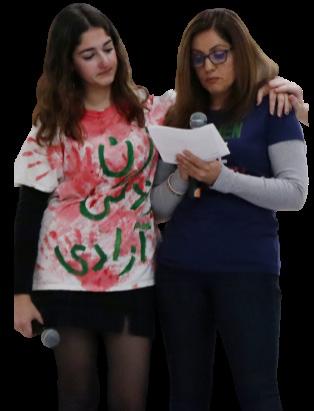
Bagherian had grown up in Iran around the start of the Iranian revolution in the 1970s, but was too young to remember the change.
“I remember going to kindergarten wearing loose, long uniforms,” she told the audience. “And that would cover my whole body covering up, coming down to my waist, attending single gender school, along with every other kid in my country, in an attempt to minimize boys so the primary language of the mandatory job was required in all public places.”

Her experiences in kindergarten are one of the many examples of the restraint that the Iranian regime has posed on its residents since 1979.
Though Bagherian that she was too young to remember anything before the regime, but had grown up at the start of the regime. She was born around the beginning of the regime, however, the current protests around both Iranian women and Iranian rights have been part of an ongoing issue since the revolution.
The Associated Student Body granted Bagherian a wish to tell her story in Iran and bring awareness about the current murders in Iran by the government.
She recollects having to cover herself from head to toe and was not allowed to “watch any sports” or “ask for divorce” or have rights to the “custody of their own children” as a woman in Iran.
Women’s protests against the government in Iran began on September 16 following the death of Mahsa Amini after being arrested by the Guidance Patrol. She was traveling with her brother from north of Iran to Tehran when she was arrested for not wearing her “hijab properly” according to the government. Since then, a series of protests had begun, leading to many arrests. In late December, the government began public death rows, following their previous practices of kidnapping any protester or person who is wearing a hijab in an “improper way.”
The Winter Wishes rally was followed up with a week of awareness organized by senior and ASB secretary Tara Kaviani one month later. The week featured lessons about Iran in all English classes, a vigil co-hosted by Bay Area for
Protesters executed
As of late January, Iran Human Rights reports that at least 109 protesters are currently at risk of execution, having been sentenced to death or charged with capital offences. It has established the ages of 60 of those protesters, and says the average is 27, with three under 18.
Iran speakers, and daily information tables at lunch about Iran.
Kaviani said that the wish was also partly her wish. Her mom and Bagherian were “best friends” since college and had both moved to America from Iran after graduating from the same university.
Although she knew she wanted to raise awareness, she wanted the Winter Wish to focus on Bagherian’s story. With the help of Activities Directors Kerry Murphy and Heather Cooper, Kaviani felt encouraged to use Winter Wishes to spread awareness about the issue “because it's one of the only times where you get everybody like listen ing to you at the same time.”
“I grew up [in America], and I was born here. I've been to Iran, so I know what's happening firsthand in a way, but I also don't at the same time know what's happening firsthand," Kaviani said. "I have a connection to the land. It's my blood, but I didn't live it. (Bagherian) did so I kind of wanted that firsthand experience to be conveyed by her."
Kaviani said that the protests in Iran began as a women’s rights movement following the disappearance of Mahsa Amini, but since have spread to “something even bigger.” According to Kaviani, the Iran government began creat ing the “death row” in the streets the week of the Winter Wishes rally, which meant that executions by the gov ernment were no longer hidden under wraps but publicly demonstrated. She remembers staying up all night before the rally to include footage of the public executions in the video.
“The night of Winter Wishes I did not go to bed the whole night. I made this video because I wanted it to be on time with everything happening like a live reflection of what was going on–all of the footage of the public execu tions were from that week.” Kaviani said. “But I really saw some tears and it really made me feel like okay, people here are getting it like they're hearing it.”
Bagherian hopes that awareness increases, not just for people who follow international news but ordinary people. “Women rights and human rights are just not being cared for, you know, in a lot of places like Iran and everybody basically is responsible.” Bagherian said. "The government cut the internet to the people and cut their access to the outside from the inside.”
'Sham trials'
Four young men have been executed in connection with the nationwide protests that erupted in Iran four months ago, while 18 other people have been sentenced to death. Human rights groups have said they were convicted after grossly unfair sham trials, as the defendantshave only 15 minutes to present evidence on their behalf.
Iran Awareness week — page 18
The Senior Tara Kaviani and ASB leaders in late january, consisting of classroom visits, quad activities and a Friday night vigil. For more information, please see page 18 for a photo essay and a summary of the week.
—Sources: BBC, Iran Human Rights
7 BEAR WITNESS | FEBRUARY 2023 | BHSBEARWITNESS.COM
“Every person is responsible to be the voice of the voiceless in Iran, because in Iran there's no internet. The government cut the internet to the people and cut their access to the outside from the inside.”
Shay Bagherian, math teacher who grew up in Iran
Senior Tara Kaviani with Shay Bagherian speak during December's Winter Wishes rally on the plight of the Iranian people.
Lia Choi/Bear Witness
THE POWER OF WORDS
One in five
The National Institute of Mental Health estimates that 1 in 5 adolescents aged 13-18 has experienced a severe mental disorder at some point in their life. Additionally, the prevalence of mental health disorders, including depression and anxiety, has been on the rise in recent years.
Suicide rates
According to the Centers for Disease Control and Prevention, suicide is the second leading cause of death for individuals aged 10-24, and suicide rates have been increasing in recent years, and on the rise since the pandemic.
Academic impact
Mental health issues can have a significant impact on academic performance for teens. According to a report by the National Alliance on Mental Illness, up to 50% of students with mental health disorders age 14 and older drop out of high school, and the majority of teens with mental health issues report difficulty with academic performance.
—Sources: National Institute of Mental Health, Centers for Disease Control and Prevention, National Alianne on Mental Illness
killyourself
CARISSA TAKAKI Staff Writer
he letters “KMS,” short for “kill myself,” are scribbled on bathroom walls, but they carry an added , a junior, who has dealt with anxiety
Charlie said that they also have emetophobia—the fear of vomiting—and endures panic attacks at random, which induces vomiting. Their anxiety has made school and socializing difficult, which leads to panic attacks. Charlie is being evaluated for ADHD and other processing disorders.
For Charlie, life beyond high school has also been anxiety-inducing.
“I thought that I would kill myself as soon as I graduated from high school because the ‘real world’ sounded like too much for me,” Charlie said. “I was so anxious about the future and success.”
Due to the personal nature of their story, Charlie was not comfortable revealing their identity, but they did want to share their experience with menCharlie said that their mental health has improved, but they still say their recovery “isn’t linear,” and they struggle daily with anxiety.
Branham’s “See Something, Say Something” campaign, focused on student safety, encourages students to report behaviors that may endanger their or someone else’s well-being, including issues surrounding mental health.
As part of the campaign, a video played during outreach classes explores the meaning of the “KMS” slang, which can be said jokingly among students, but for others it’s taken more literally.
The Centers for Disease Control and Prevention show that after unintentional injuries, suicide is the leading cause of death among youth aged 14 to 18. The National Alliance on Mental Illness bolsters this claim saying that roughly 20% of high school students have reported having seriously considered suicide. They add that 9% of high school aged individuals have attempted to end their lives.

, another junior student, is one of those statistics. Pat has had thoughts of suicide, but has said they’ve avoided addressing their mental health. They said their history with suicidal ideation has “eaten them out,” and caused them to feel unmotivated in and out of school.
“It’s harder to make friends because everyone else around me seems so social,” Pat said. “I am trying, but my lack of emotions makes it difficult for me to put myself out there.”
“Words do matter”
Prior to losing its advisor Kevin Nguyen, Branham’s previous Mental Health Matters Club aimed to promote transparency on the topic of mental health through student-led projects and advocacy.
Senior Maggie Dong, the club’s former president, said that her experience in discussing mental illness has taught her the seriousness behind the phrase and believes it is no subject to joke around about.
“I dont want to say it’s normalized, but the phrase ‘kill myself’ is tossed around,” she said.
Dong added that in the mental health field, the phrase is not taken lightly.
“There are serious implications behind the sentence,” she said.
Dong too agrees that she has heard the phrase used at Branham– and not in a serious way.
“People are intentionally trying to be hurtful when they say it. There’s a lot of people who are unaware of the implications behind this phrase… When they say ‘I’m going to kill myself’ without meaning it, it shows a bit of carelessness and a lack of consideration for how it might be a serious topic for others,” she said.
Additionally, Dong said this phrase tends to come out when people are feeling stressed or overwhelmed.
“Sometimes we say these things that we don’t really mean when we are in tough situations. But its important to think about what you’re saying… Words do matter,” Dong said.
Both Pat and Charlie say that the phrase ‘I want to kill myself’ is often said on campus frivolously, often referring to a minor inconvenience or stressor.
It makes Charlie feel uncomfortable when people use the phrase lightly, however it doesn’t trigger them.
At the same time, they believe there is no simple answer to whether using the phrase dramatically is necessarily wrong.
“Everyone copes with stress in their own way — and to an extent — to each their own,” Charlie said. “To some extent ‘loose language’ surrounding mental illness can indicate comfort around talking about it,” they said. “I don’t want to stop people from joking about mental illness if it genuinely helps them cope or acts as a gateway for more serious conversation about mental illness.”
Still, Charlie said “‘kill myself’ and similar phrases diminish the severity of the mental illness symptom or struggle.”
Pat sees it differently, saying “kill myself” is a form of “a form of disrespect for someone who has fought or is fighting for themselves or someone they love.”
“What are you really feeling?”
Assistant principal Victoria Waite oversees Branham’s newly enforced “See Something Say Something” program, which functions as an anonymous reporting system.
The program alerts administrators when a student is worried about being harmed, another harming themselves, or of any threats. Despite the anonymity, Waite said less than ten students have actually utilized the program.
Even though it’s collected a handful of responses, Waite doesn’t consider it ineffective, since it helps administrators identify struggling students.
She also said that rate of highschool students admitting they are struggling with their mental health has also improved within the past five years. Rather than dismissing students’ emotions saying they’re “just being a teenager”, she's seen real acknowledgment of the issue.
“I see students being willing to share if their friends are struggling, I see students coming up and sharing that they’re struggling. Its a testament to the fact that people feel safe to share on our campus,” she said.
Yet, Waite said that teenagers often stuggle to identiy what they’re truly feeling, leading them to take phrases like ‘I want to kill myself’ less serously than it is.
“There’a a sense (that) it’s just another thing to say to show that you're exasperated or that you’re frustrated… But what are you really feeling? Are you feeling upset? Are you feeling frustrated? Are you tired?” What is the emotion you’re feeling versus throwing around quotes that can be triggering for people,’ she said.
As an administrator, Waite said while students can hear the phrase and ignore it, she has to follow up, despite how obvious the intention may seem. School officials have the responsibility to check in with students, which she said can mean reaching out to medical staff and parents to assess their risk.
“Our number one job is to make sure that people are safe on this campus,” Waite said.
It depletes administrator resources when students abuse the phrase.
“We need more people to say out loud ‘hey I need help’ or ‘I think my friend is struggling right now.’ That's how we get to them, but the help really ends if we throw around those terms,” Waite said. “I know that a lot of people are hyperbolic. But think about the power of your words, identify how you’re feeling, and not just say some throwaway statement.We need to be more mindful of our words, so that when people really do need it, people are being heard and seen.”
8 BEAR WITNESS | FEBRUARY 2023 | BHSBEARWITNESS.COM
Students with mental health issues wish others would stop using the term jokingly.
With more high-cost development, has San Jose lost its character?
a robot wrote my essay
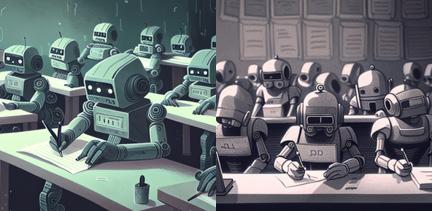

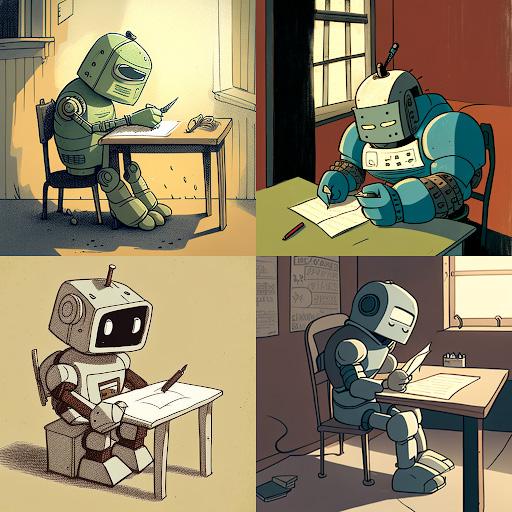

World Cup madness is the latest example of soccer’s cultural dominance.
BEAR WITNESS BEAR WITNESS

WINTER WISHES
For his Theater I assignment last semester, William, a senior student, was asked to watch and review a live play, analyzing the show’s lighting and theatrical elements. However, he didn’t feel like doing it.
He turned to a program called ChatGPT, prompting it to give its analysis on “Shrek: The Musical,” streaming on Netflix, with notes on its lighting and setting.
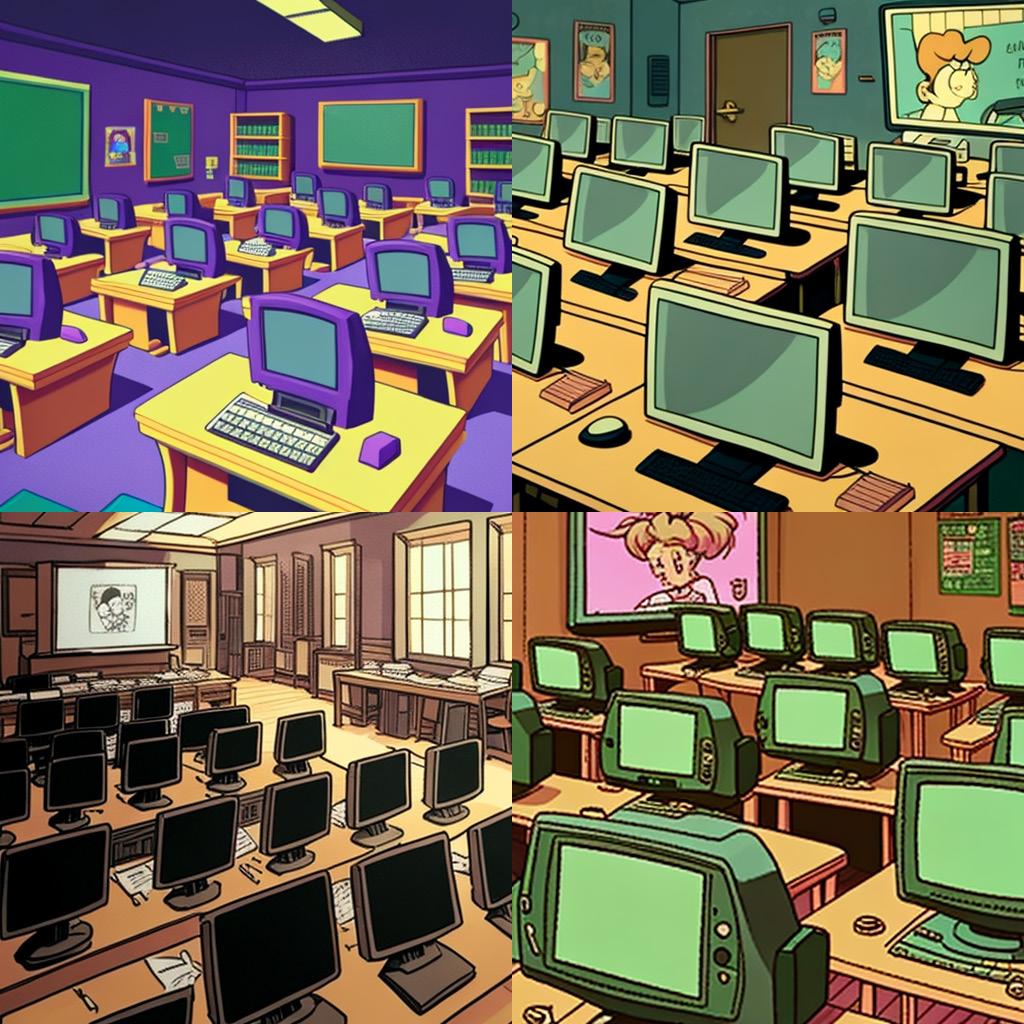
After submitting the essay, he said that theater teacher Jennifer Sorkin approached him and his friend where they had seen “Shrek,” as it had not been performed in the Bay Area in more than four years.
After saying that they had seen it on Netflix, Sorkin later gave him a passing grade, not knowing that it was written with the aid of artificial intelligence. This student requested to be anonymous and the name “William” is a placeholder.
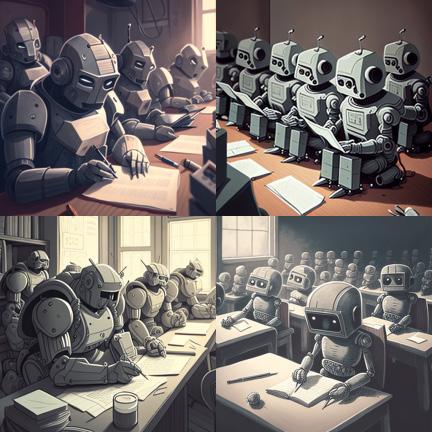
“I’m going to be honest, I’m not going to see a play anytime soon,” William said. “Maybe it is morally wrong to cheat, but if you don’t rely on it, it’s fine.”



Bay Area artificial intelligence research company OpenAI released ChatGPT in late 2022, allowing users to provide prompts and receive detailed, conversational answers that can pass as human.
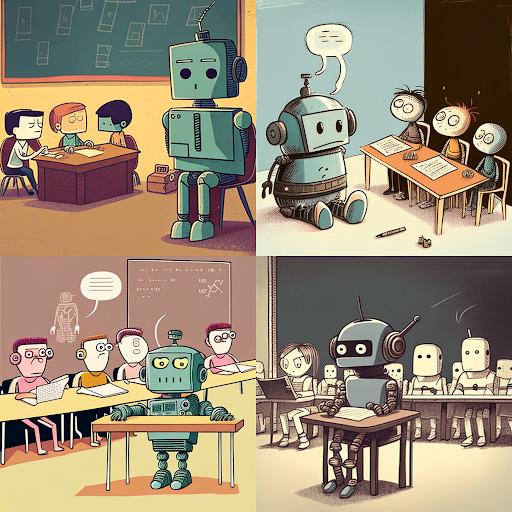

Developers tested it to make it guess the next word in a sentence and answer questions correctly; answers are
As opioid deaths increase, Branham joins other schools in combating possible overdoses on campus. PAGE 10-11 •
FONDEST WISHES
AADYANT SURESH Staff Writer
JIYOON CHOI Co-Editor-in-Chief
Beloved English teacher Mike Espinoza was hospitalized for the majority of fall semester due to struggles with microscopic polyangiitis, a disease that damages the body’s organs and causes severe pain.
As he was recovering and planning his return in the spring semester, he had forgotten about the annual Winter Wishes rally, until his fellow English colleague Lily Johnson reached out.
Johnson told Espinoza that a wish for the Latinx Student Union was to be granted at the upperclassman rally, and she had wanted him to be there to grant the wish.
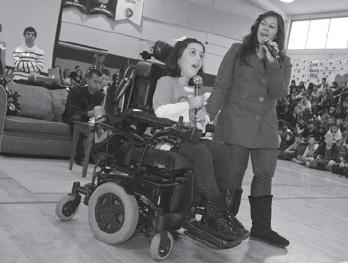
It turned out to be a ruse.
“That was a good cover,” Espinoza said. “I really thought I was going to be there for LSU, and they flipped it.”
Inside Winter Wishes
A look at past recipients’ wishes, from the first event in 2011 to this year’s rally.
Page 12
Heartwarming surprises like the one made for Espinoza have been a Winter Wishes tradition since 2011.
The program has since spread to all other schools in the district since then. The event, run by student
SEE WINTER WISHES • PAGE 12
VANDALISM
Bathrooms a hassle for nonbinary students
LIA CHOI
Staff Writer

Junior Finn Albano visits different bathrooms depending on which gender he wants to pass as on any given day.
He weighs factors such as their cleanliness, accessibility, and, more specifically, menstrual products. Albano describes himself as transmasculine and normally passes as masculine. He often uses boys restrooms, but with this school year’s routinely vandalized bathrooms, he finds himself visiting the girls or gender-neutral bathrooms as well. From torn-out soap dispensers, wrecked cover seats and missing toilet paper, negative bathroom behavior at Branham has resulted in the lack of necessary products in the bathrooms, including menstrual products.
SEE BATHROOMS • PAGE 13
BHSBEARWITNESS.COM FEBRUARY 2023 BRANHAM HIGH SCHOOL @bhsbearwitness OPINION PAGE 14 PAGE 16
SPORTS
A.I. IN THE CLASSROM
PAGE
ChatGPT and other A.I. systems challenge how students and teachers approach classwork
service that creates unique, copyright-free images. To create the image, the Bear Witness reporter enrolled in a Midjourney Discord channel, and submitted a human-language prompt describing the image. How Midjourney works: The A.I., using a database of existing artists’ works, through text prompts and parameters and uses a Machine Learning algorithm trained on a large amount of image data to produce unique images, with four variations based on the prompt. The process can be revised until the user is satisfied with the result or moves on to a different prompt. Ethical concerns: Because Midjourney learns from an artist’s individual style and say that they are used without the artists’ consent.
“Cartoon robot, in a class, working on a writing assignment.” The images above were created by Midjourney, a free to subscription-based
Bear Witness Archives 2011 Robyn Gutierrez with her sister Danielle singing “Who Says” by Selena Gomez at the first Winter Wishes rally. Robyn suffered from muscular dystrophy and passed away in 2017.
SEE AI • PAGE 15
Winter Wishes recipients share emotional impact of Branham’s largest rally
Branham joins other schools in finding ways to combat opioid use, especially fentanyl, among students
REESE GARDNER Student Life Editor
In the middle of an interview about Branham's approach to the opioid crisis mid-January, a call on the radio alerted Principal Lindsay Schubert about a possible fentanyl overdose.
“Call 911. I have a student down.”
“The student is conscious but not responding verbally.”
“Our address is 1570 Branham Lane.”
“Get the Narcan.”
The student had passed out in football stadium, and administrators in the office, Student Service Center and Wellness Center, were alerted of the situation and responded accordingly due to the training provided by the district. The student eventually recovered.
When she was an Assistant Principal at Del Mar, Schubert had proposed the training of Narcan, the emergency treatment for known or suspected opioid overdose.
“Looking at the increasing rates of opioid overdoses in the area and in the nation, we decided to start investigating (Narcan training),” Schubert said when asked about Branham’s plan on training regarding Narcan. According to a December Mercury News report, less than 40% of schools in the Bay Area have an active overdose policy and procedure.
While only the administrators on campus are trained at Branham and in the district, Schubert has mentioned looking into training the teachers on Narcan as well.
The school’s protocol for student overdose on campus makes sure that the student is first of all safe. Information about the incident is gathered, either from the student if they are responsive, or from witnesses or someone who knows that student well.
The school then calls emergency services, but if the student is unconscious or unresponsive, Narcan is administered before calling 911.
“Whether it's in the immediacy of the health effects and dangers, the long-term effects of drug use or impact on the student and their families, we see what we can do,” Schubert said.
The school and district are looking at new ways to share more information about the dangers of drug use to not just students but also the community and staff.
Schubert has been sharing information herself through the weekly emails sent out to the Branham community in order to increase awareness.
The district has been looking at outside agencies for the parents' education on what factors they should look for and the effects of drugs. Outreach or live webinars shared with students and families are also conducted.
“Most research shows that big assemblies are not effective because people are not paying attention,” Schubert said. “But with an advisory or outreach class, we are able to reach everybody at the same time.”
The National Center for Drug Abuse Statistics reportss that 8.33% of 12- to 17-year-olds nationwide report using drugs in the previous month. The number jumps to 18.24% of 18-25 year-olds in California, who more likely to use drugs than the average American. Overdose deaths due to opioids have increased 500% among 15- to 24-year-olds since 1999.
According to a recent Bear Witness poll, 57% of the 312 readers surveyed say that Branham does not do an adequate job of educating students about the dangers of drug use. Some students in the survey mentioned that the school needs to hold more than one seminar, which is held in freshman P.E. classes. Nearly 80% of respondents also said that they had witnessed students using drugs on campus.
Remembering a student

In November, former Branham student Valentino Cardenas Shimmin passed away due
to an unintended fentanyl overdose.
In a public Facebook post, his mother Melissa Shimmin said that Valentino had struggled with depression, anxiety and substance abuse. He had been to a rehabilitation center twice but did not complete his stay the second time.
In her message, Melissa wrote that her son’s death highlights the need for affordable mental health care, especially the transition care from the rehabilitation clinic to home that is expensive and not always covered by health insurance.
Melissa shared her son’s story on social media not only in hope of it reaching the people in similar situations, but also to spread awareness about the topic. This has welcomed other people to come out and share their own stories, relating to Valentino through how the use of drugs by others have affected them.
Junior Sarina Nunes was friends with Valentino since sixth grade and knew him both before and while he was using drugs.
Because Valentino stayed in rehabilitation often, they lost some contact, but she always tried to reach out since their friendship meant a lot for the both of them.
“We always tried to talk and check in on each other whenever we could be in contact,” Nunes said. “Even though it was choppy, it was special to the both of us.”
Although Nunes already experienced a friend pass away due to overdose, the fear of it happening to Valentino did not cross her mind until it happened.
“It wasn't surreal to me,” she said. “Everyone was doing (drugs), and you never think (death is) the next thing happening.”
After directly witnessing the overdose of her friends, Nunes urges teenagers to learn about the risks of drugs and the dangers it can lead to before trying any.
“Drugs are specifically promoted to teens, especially vaping,” Nunes said. “Having an experience is cool, but you have to put it into perspective and see if it's worth your life and well being.”
Like Melissa, Nunes plans to share information about the harm of using drugs at a young age at school and on social media to protect her family, friends and others who are not yet informed.
“(Making people) aware of situations so they know what they're getting into before they get into it (is important),” she said.
Valentino’s girlfriend, Anna Stubstad, said she wanted Shimmin to be remembered as a kind and caring person. His goal was to become a therapist for youth like him.
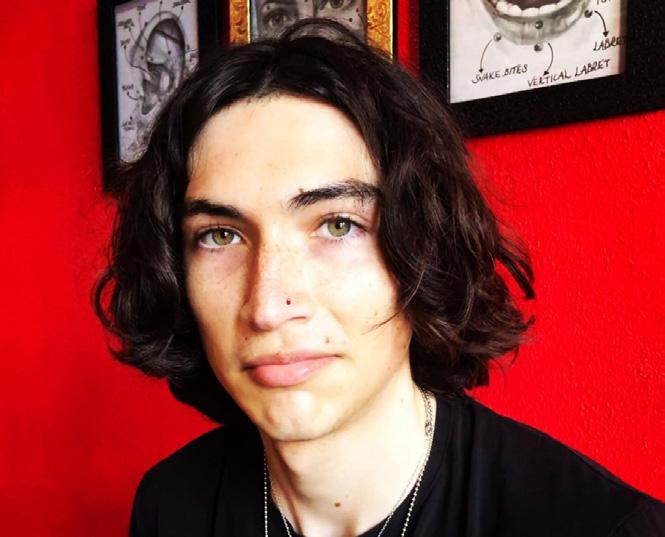
“He was such an amazing person, probably one of the most nonjudgmental people I know,” she said. “So kind. So considerate.”
As she mourns the passing of her boyfriend, Stubstad said that the opioid epidemic is already here, and students should turn to campus resources such as the Wellness Center.
“It is at Branham and it is all over the Bay Area and California, and that is why we have to start making an effort to combat it,” she said.
Additional reporting by Ziv Galpaz
Fentanyl-related overdose deaths among teens 15-19 years old in California per 100,000 residents
What do you know about fentanyl?
1. What is the difference between heroin and fentanyl?
a. Heroin can be injected while fentanyl can only be snorted.
b. Heroin is legal while fentanyl is not.
c. Heroin is a naturally occurring opioid while fentanyl is a synthetic opioid.
d. Heroin is dangerous while fentanyl is not.
2. What are unreliable places to obtain drugs?
a. Streets
b. Snapchat
c. Classmate
d. All of the above
3. How much fentanyl a. 2 mg b. 5 mg c. 7 mg d. 12 mg
3. Which of the following fentanyl?
a. Dizziness
b. Loss of smell
c. Vomiting
Overdose
An consume amount has has time the
Wooden Caused narcotics, syndrome, chest inability stiff
4. D. Even if you trust your peers and friends, fentanyl can be laced in over the counter pills and even candies. Do not get drugs off the streets, on Snapchat, or from a classmate. 5. D. Naloxone is very accessible, at no cost in many overdose deaths due to opioids. In 2021, 5,722 people died due to fent
2. B. Some symptoms of fentanyl use include euphoria, confusion, drowsiness, dizziness, extreme happiness, nausea, vomiting, and respiratory depression. However,
d. Extreme happiness is synthetically produced and heroin is naturally occuring.
BEAR WITNESS | FEBRUARY 2023 | BHSBEARWITNESS.COM 10
Two sides 2011 0 2012 2 2013 1 2014 2 2015 6 2016 10
Valentino Shimmin Former Branham student passed away Nov. 30 due to an unintended fentanyl overdose.
"I share his story because I want to destigmatize mental health disorders including substance use disorder. I want to normalize discussion about it. He was ill, just as ill as a child with cancer is."
Melissa Shimmin, mother of Valentino Shimmin in a public Facebook post on her son's death.
fentanyl does it take to overdose?
5. Where can you get Naloxone?
a. Pharmacies
b. Local organizations
c. Branham or any other CUHSD schools
d. All of the above
and interviews
following is NOT an effect of happiness
sides of the same pill
6. In 2021, out of the 6,843 opioid-related overdose deaths in California, how many were related to fentanyl?
a. 1,034
b. 2,345
c. 4,321
d. 5,722

See answers below.
Overdose overdose occurs when you consume more than a regular amount of drugs that your body tolerance for. If your body a metabolite, there will be time for your body to process drugs.
Wooden Chest Syndrome
Caused by a high dose of narcotics, wooden chest syndrome, also called the rigid chest wall syndrome, is the inability to breathe because of a chest.
Medical Fentanyl
Pharmaceutical fentanyl is approved for treating severe pain and is carefully administered by doctors. It is also used as pain management during surgical procedures.
Illegally made Fentanyl
Illicit fentanyl is harmful and unpredictable. It is hidden in drugs and can be smuggled and laced in small amounts into candies, nasal sprays, and other drugs such as cocaine or heroin.
Synthetic opioid
Synthetic opioids are substances that are created in a laboratory. They act on the brain just as natural opioids do.
Natural opioid
Natural opioids are substances extracted from the seed pods of poppies.
Short Acting Opioids
After administering, the drug has a very quick effect on the body. It takes less time to react and it stays in the body for less time as well.
Long Acting Opioids
Part of the drug’s dose goes in effect immediately, also called immediate-release. The rest of the drug’s dose is delayed-release, meaning the effect only appears hours after taking the drug.
Q&A
Dr. Nancy Sandoval is an anesthesiologist in Oakland and is affiliated with multiple hospitals in the area, including UCSF Health-UCSF Medical Center and UCSF Benioff Children's Hospital Oakland.

Sandoval earned a medical degree from Stanford University School of Medicine and has been in practice for more than 20 years.
What is fentanyl?
Fentanyl is a synthetic opioid and it has been used for many years in the medical profession because of its qualities. Fentanyl was a drug that was more commonly used in the operating room since it was a short-acting drug.
How do you get addicted?
In the medical profession, patients develop tolerance to a short-acting opioid like fentanyl. The tolerance becomes requiring more medication. Within less than a week, sometimes patients can develop a physical dependence. There are different forms of dependence: physical and psychological. Physical dependence occurs when you stop using, you get withdrawal symptoms. Psychological dependence is different because when you stop using it, you just have the thought that you need to have it.
Why is it so dangerous?
I call it a dealer's dream because you only need such a smaller quantity which makes it easier to smuggle and get it where you need to.
What you see more often is that fentanyl gets sneaked into a lot of stuff. A lot of times, people do not realize that they've been laced with some fentanyl. Basically, unbeknownst to you, you're being hooked and being fed an opioid.
The scary part is that with fentanyl, there isn’t some type of quality assurance as far as the dosage. There are all these people that don't know that they're taking fentanyl and then having massive amounts for the first time, not having a tolerance, and then all of a sudden they overdose.
How can you be aware of fentanyl?
The best thing is education. People should understand that fentanyl is more serious than the other opioids out there. They're now noticing that people are giving their friends what they think is an over-the-counter pain medication but it’s actually laced with fentanyl. Fentanyl is all over the place because it's cheap to produce and it's used in such small amounts. Be cautious and think twice about wanting to try it or check it out because there's no standard. You could get a pill and it's going to be either a big or a small amount of fentanyl or that you're going to smoke or take a pill and it’s laced with fentanyl. The scary part is that people want to trust others but at the same time you really have to be careful because it is very prevalent, how it's available to people.
What is something you wish students knew?
Right now, you're smart, you're quick, and you're processing things. But your judgment, while under the influence, can harm you or others. Drug use right now — whatever it is, cannabis, alcohol, opioids — affects the development of your brain. If you have a friend who might be showing signs of having an issue, and let it be opioids, such as fentanyl, pain pills, cannabis, alcohol, or even smoking, there are places to go to get help. Even the people that you think might not have any problems at all might also be struggling with similar problems. It could be anybody, it could be your best friend and you might just not know it.
Interview by
Resources Santa Clara County Opiod Overdose Prevention Project https://bhsd.sccgov.org/information-resources/ opioid-overdose-prevention-project
To find naxalone near you: https://harmreduction.org/resource-center/ harm-reduction-near-you/
Sources: Centers for Disease Control and Prevention, Drug Enforcement Agency, Santa Clara Behavioral Health Services
of
consuming
loss of smell is not a symptom. 3.
will result in certain death. 4. areas. Nalaxone is the generic name while Narcan is the brand name. 6. D Over the years, there has been a rising amount of
in
1.
BEAR WITNESS | FEBRUARY 2023 | BHSBEARWITNESS.COM 11
C. Although fentanyl can be found laced
heroin, the fundamental difference between the two opioids is that fentanyl
A. Depending on weight,
2 milligrams
fentanyl
2022* 206 2021 259 2020 250 2018 35 2019 81 2016 10 2017 10 California Source: California Department of Vital Statistics; 2022 figures based on preliminary estimates Opioid-related incidents in Santa Clara County in 2021 7.7 out of 100,000 Deaths related to any opioid overdose 16.9 out of 100,000 Emergency visits related to any opioid overdose 5.2 out of 100,000 Hospitalizations related to any opioid overdose 193.7 out of 1,000 Prescriptions for opioids in the county.
Shantala Muruganujan and Makayla Wu
Reporting
by Shantala Muruganujan and Makayla Wu
ANSWERS
News highlights visit @bhsbearwitness
Vigil attendees in Downtown San Jose honor victims of the twin shootings that took place during the start of Lunar New Year.
Teachers honor 22 students for their resilience for Bruin of the Month
Teachers recognized 22 students as Bruins of the Month on Friday in the ASB room on Feb. 3, the second award ceremony of the year.
The theme for the November and December recipients was resilience.
Teachers were asked to identify a student who has persevered despite facing challenges in their personal or academic life.
The reward for students included a taco luncheon with their nominating teacher, a certificate and a front-ofthe-line pass.
Among those recognized was senior Jared Castillo, nominated by English teacher Jeannine Black. She said that Castillo remains at Branham despite a recent family move to Lathrop. Despite the challenges, Black said that Castillo “arrives to class on time, with a friendly ‘hello’ and a warm smile on his face, demonstrating his resilience every day.”
— Makayla Wu
Vigil honors Lunar New Year mass shooting victims
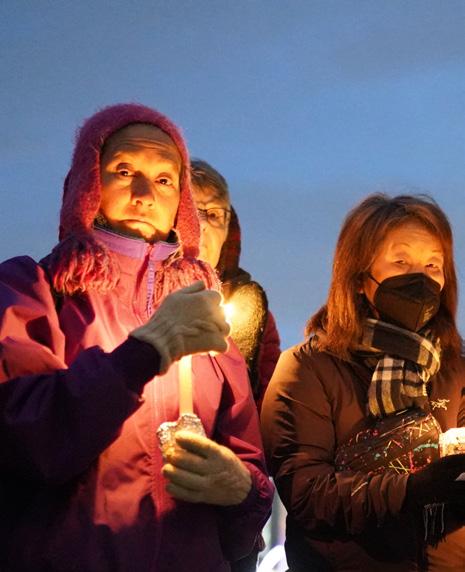
A small crowd gathered San Jose Hall on Jan. 29 to honor the victims of the shootings at Monterey Park and Half Moon Bay.
The vigil was organized by the Asian Law Alliance, a nonprofit group working with primarily low-income Asian American groups, with around 60 people in attendance.
A moment of silence was held for the 11 victims from Monterey Park and the seven from Half Moon Bay, followed by a reading of the names of the victims, who were predominantly Asian American.
Attorney Dorothy Hwang from the Asian Law Alliance said that the goal of the vigil was to find a place for the community to share in their grief.
“It’s important for us to really understand and realize that we’re not alone, that we are not isolated as much as we feel that way that we are one of many,” said Hwang.
— Makayla Wu
Storms force teachers living in Santa Cruz area to miss school
The storms that have battered California with nearly 32 trillion gallons of water early January left teachers living over the Santa Cruz mountains having to deal with unreliable and often unsafe roads on Highway 17 and beyond.
Math teacher Meredith Allen lives in the small mountain town of Scotts Valley and missed two days of school because of the dangers of getting to campus.
Highway 17 southbound into San Jose had experienced a serious mudslide halting the ability for Allen and other teachers to arrive on campus last week.
Meanwhile, in nearby Felton, the San Lorenzo river flooded and forced evacuations in nearby communities.
Though she said that she did not experience any property damage or power outages as others had, getting to school was the biggest difficulty.
“When we got a flash flood warning on Monday last week, we were told not to evacuate or use the roads unless entirely necessary,” she said.
According to Golden Gate Weather Services, the region’s historic rainfall has not been seen since 1862, when 23 inches of rain fell from Jan. 5 to Jan. 25 in the San Francisco region. The recent rains brought in 17 inches, good for second place in the record books.
WINTER WISHES
WINTER WISHES | Rally builds empathy at school
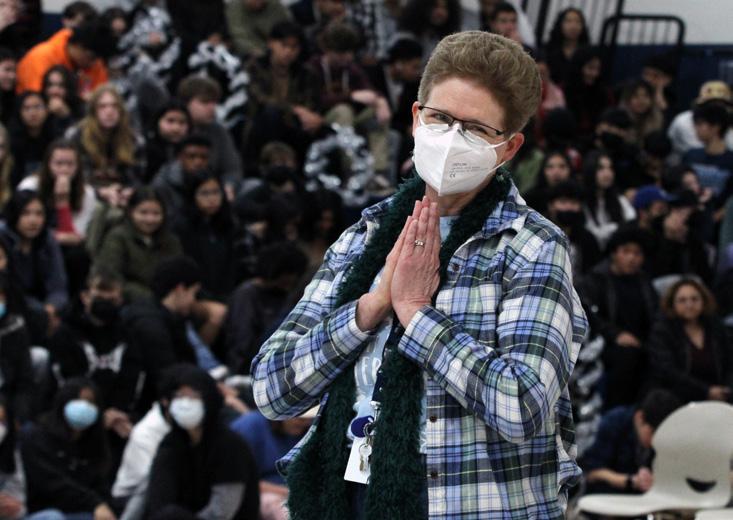
leaders, has granted wishes small and large: from Branham school shirts to paying off a family’s monthly rent to repairing a roof burnt in a fire.
Del Mar Principal Larry Lopez, who was Branham’s activities director from 2011 to 2015, brought the idea of Winter Wishes from Merced High School, where he previously worked.
He said the event was instrumental in bringing the Branham community together and helps students empathize with their peers on a deeper level.
“People do not know what things we’re all dealing with, the impacts of our own lives and our own traumas and Winter Wishes show how we can rely on one another during the most difficult times,” he said. “That sometimes creates a better sense of humanity essentially.”
Winter Wishes rallies provide an unique opportunity for students and staff to share stories
that would not otherwise have been told which has great emotional impacts.
”It’s a reminder that the most important things to people aren’t always about money or about financial things,” Lopez said. “It’s the one that usually grounds itself into community and family.”
The Impact
Lopez credits the ASB students then who first turned his pitch into a reality.
“It’s always the student leaders who step into these roles having a real clear drive, taking ownership of things, creating scripts, talking to people, soliciting donations, and more,” he said. “It was the things that my students did behind the scenes that was the real ‘aha’ moment which I’ll always remember because the students established the program and made it what it is today.”
Starting in 2015, NBC Bay Area has been filming and reporting on the Winter Wishes Rally.
FOND MEMORIES OF WISHES PAST
SUPPORTING ARTISTS
Branham alumnus Dee Nguyen was the Bear Witness’ previous art director and has produced several nationally award-winning pieces. However, prior to the 2022 Winter Wishes, they had used iPads borrowed from the program.

So, Nguyen was surprised when they were called to the middle of the football field in December, the first one held in-person since school had reopened.

“I was so surprised, I didn’t expect it to happen,” they said.
Nguyen was gifted with a new iPad Pro, Apple Pencil, and a basket of art supplies. It was wished by their fellow journalists and friend Liam Kim, who praised Nguyen’s knack for digital art despite their lack of equipment.
Nguyen remembers being called out to the large field and being watched by nearly 2,000 students.
“I didn’t realize how big the school was until I was in the middle of it,” they said. “Having all these friends who were looking at me felt like I was being so supported by the school.”
The iPad gift helped Nguyen produce more art for the Bear Witness during the school year. As a freshman at San Jose State University studying biology, they said they use it “basically as a computer” helping with taking notes during the lecture and more.
Lopez said that those YouTube videos still are occasionally recommended to him. He is proud that this program was able to be continued by the students to change and impact people’s lives and be one of the aspects that represent Branham. “The message of Winter Wishes is to get a better understanding of who we are and who our neighbors are,” Lopez said. “We go into classes and we sit by the same people but do we ever know what people are dealing with or what they’re going through? Winter wishes give an opportunity to really uncover and unpack a lot about the people and connecting with them by not only experiencing it in the rally, but also by generating ways we can better understand each other moving forward.”
The Bear Witness reached out to past and current recipients to follow up on on the impact of their gifts
husband.
The iPad has allowed Nguyen to experiment and utilize different styles, colors, and textures such as oil paint or pastel. It makes the drawing process easier and more accessible as Nguyen doesn’t have to hand draw and scan anymore.
REMEMBERING ROBYN
Out of the first four rallies Lopez helped organize, the most memorable wish is the story of Robyn Gutierrez during the first wish. Gutierrez, who was 11 years old at the time, had muscular dystrophy, and singing “Who Says” by Selena Gomez with her sister Danielle was their only wish.
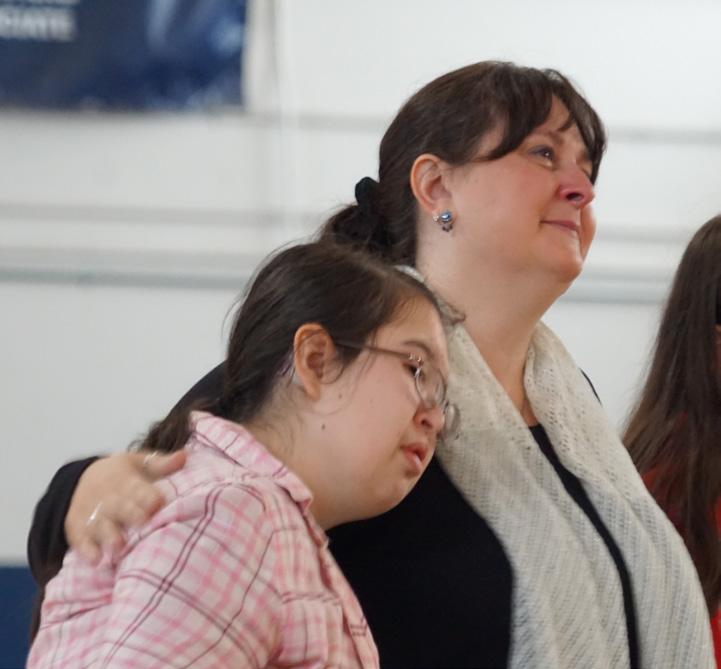
“As they were singing, you could hear a pin drop in the gym,” Lopez said. “That was how quiet it was. Once they were done, it was a huge standing ovation then tears from everybody. It was powerful and important.”
As a freshman in 2016, Robyn received another Winter Wishes gift, this time to surpass 1,000 followers on her YouTube channel, Magical Mermaid productions. She had shared total of eight original videos of her singing, acting and living her daily life. Robyn passed away in 2017, at the age of 14. To help Robyn’s mother Aarica Kargh-Gutierrez with expenses, a funding site was arranged which raised over $14,000. Following Robyn’s death which was shared and spread through social media, students wore green clothes or ribbons to show support of her family.
Later, a posthumous wish was made to honor her with a plaque in Dent Grove, which was renamed to Gutierrez Grove, near the back of the school.
“She inspired all of us,” Kyle Haugh said in 2019 when he wished for the memorial.
Kargh-Gutierrez and Robyn’s friends stood together during the rally while the video honoring Robyn played.
“The fact that she is still remembered here, and she had that moment to be a part of something, when she knew she wasn’t going to be around much longer, we really appreciate it,”
Kargh-Gutierrez said after watching the video.
“The iPad itself has been wonderful,” Nguyen said. “It’s my main source of art creation or output where I make all of my work which has been really good.”
One of the first pieces Nguyen created with the iPad was a detailed, scientific illustration of a whale for Stanford University through an internship with former art teacher Jessica Bender’s
BIONIC BRUINS FEEL THE LOVE
The Bionic Bruins robotics club honored engineering teachers Barbara Schremp and Ray Radlinsky, thanking them for their work in supporting the club.
For their wish, they were rewarded with pneumatics to make mechanisms on their robots. Club president Jin Cho (10) said that they often compete with other schools with more robust funding.
“Everyone had been waiting for the parts for a while,” Cho said. “We’ve been trying to get these ourselves, but we weren’t able to.” Cho said.
She was also happy that Schremp and Radlinsky were honored at the rally.
“I didn’t realize the extent that the ASB would go to get our advisers recognized,” she said. “It felt really nice seeing Ms. Schremp be happy even though Mr. Ray couldn’t be there.”
Robotics is the only club in the last five years to have received their wish granted twice, the first time in 2018. Advisers Steven Turner and Schremp were recognized for their hard work as members wished as well as $600 in funds.
“They invest a lot of their time outside of school,” robotics member William Gardner said in 2018 about wishing to recognize the advisors.
“It personally greatly impacted me,” they said. “I can just make art wherever I can go rather than carrying a sketchbook and watercolors as I used to. It’s really helped me creatively.”
The digital aspect also helps with sharing the art on social media directly instead of taking a picture of it. Nguyen’s art can be found on Instagram at @lvlybrd.
Robotics is currently participating in competitions to try to qualify for state and international competition. After the competitions are over in March, they will shift their focus more toward outreach by visiting local middle and elementary schools to recruit more members.
12 BEAR WITNESS | FEBRUARY 2023 | BHSBEARWITNESS.COM NEWS
Bear Witness archives 2021
Dee Nguyen and Liam Kim at last year’s rally.
— Ziv Galpaz
Fitz Vo/Bear Witness
From PAGE 9
Bear Witness archives 2019 Aaria Kargh-Gutierrez watches a tribute video made in honor of Robyn Gutierrez, who would have graduated in 2020.
Jiyoon Choi/Bear Witness
English teacher Mike Espinoza was surprised with 49ers tickets and other gifts at this year’s Winter Wishes rally.
Jiyoon Choi/Bear Witness Bionic Bruins adviser Barbara Schremp was honored at this year’s Winter Wishes rally.
OVERHEARD | QUOTES OF THE MONTH FROM OUR ONLINE STORIES
Sophomore Maya Drake is one of the rising star’s at San Jose’s Children’s Musical Theater, and has been cast as the lead in “The Wizard Oz,” “Urinetown” and “Les Miserables.”
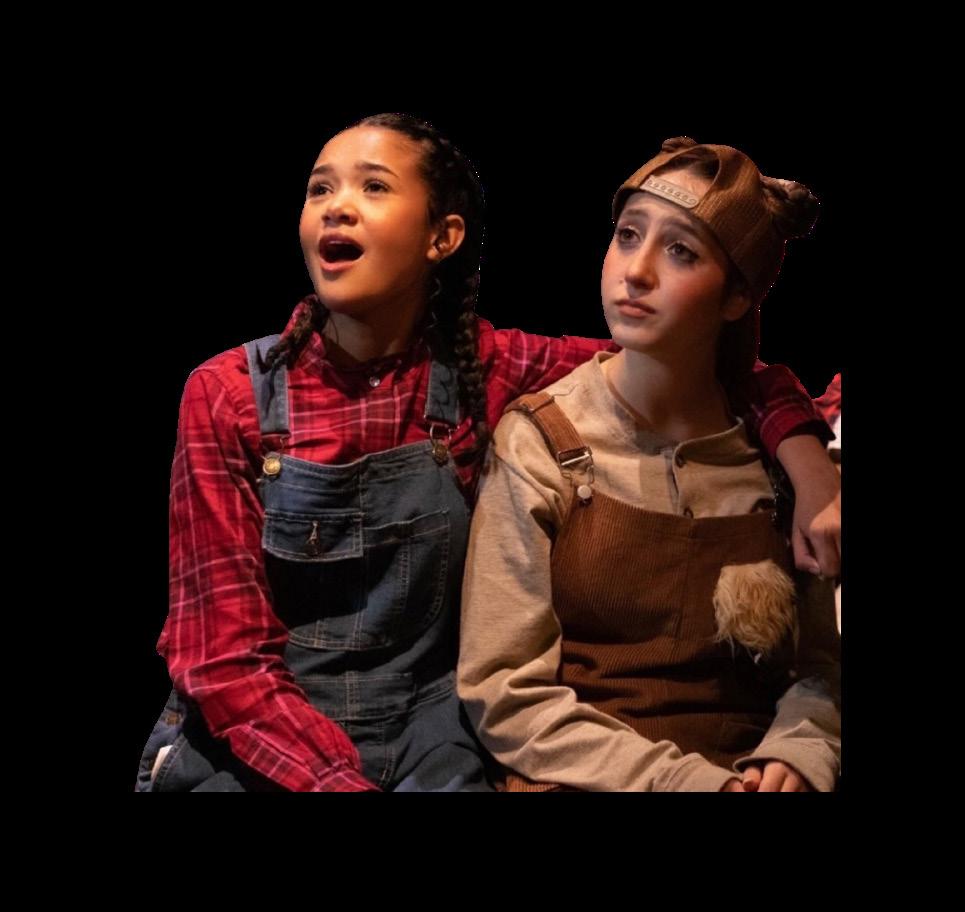
BATHROOMS | Costs to repair damages ‘worst it’s ever been’
According to a Bear Witness survey poll of 214 readers, 52% say they have been impacted by the lack of personal hygiene products.

However, menstrual products are continuously restocked nightly according to state law. If there is a report that they are empty during the day, they would be immediately restocked by custodians.
“The only issue we have been having is since they are free and there is no way to monitor them, sometimes they are empty three or four times a day,” said plant manager Venero Ramos
He suspects that student vandalism is behind the disappearance of the menstrual products and said that the school, with 2,020 students, is the largest in the district and has similar staffing levels as the smallest.
With the additional eight bathrooms from the new buildings, the supervision staff is further spread thin.
“More bathrooms make it harder for faculty to supervise since we can’t go in them directly,” Ramos said. “We closed some off in the beginning of the year, but that wasn’t enough for the amount of students we have now.”
Since the start of the school year through Jan. 25, Ramos said his staff has spent nearly $3,500 recovering or fixing bathroom products due to vandalism, along with having to remove bathroom graffiti 3 to 5 times daily and unclogging 35 to 40 toilets.
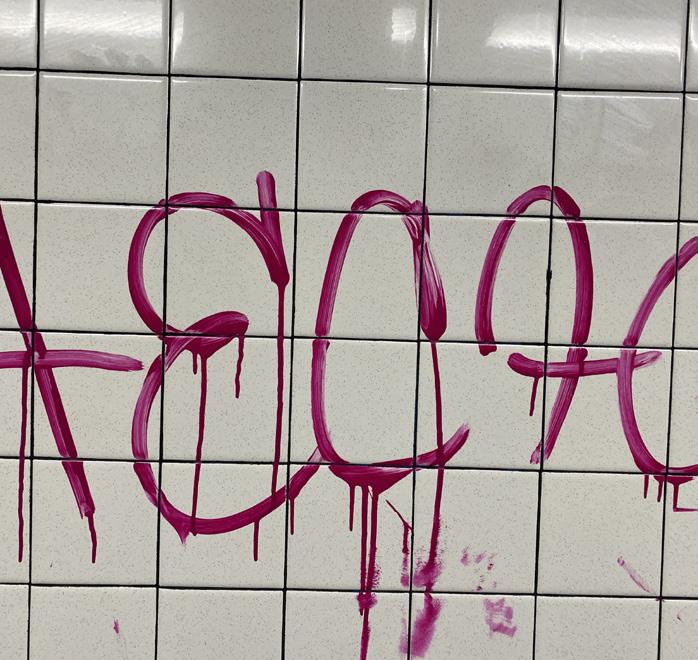
Since Ramos started eight years ago, student misbehavior “is the worst” he’s seen.
With funds running out, Ramos’ goal this semester is to cut back on bathroom supplies such as soap dispensers and toilet covers.
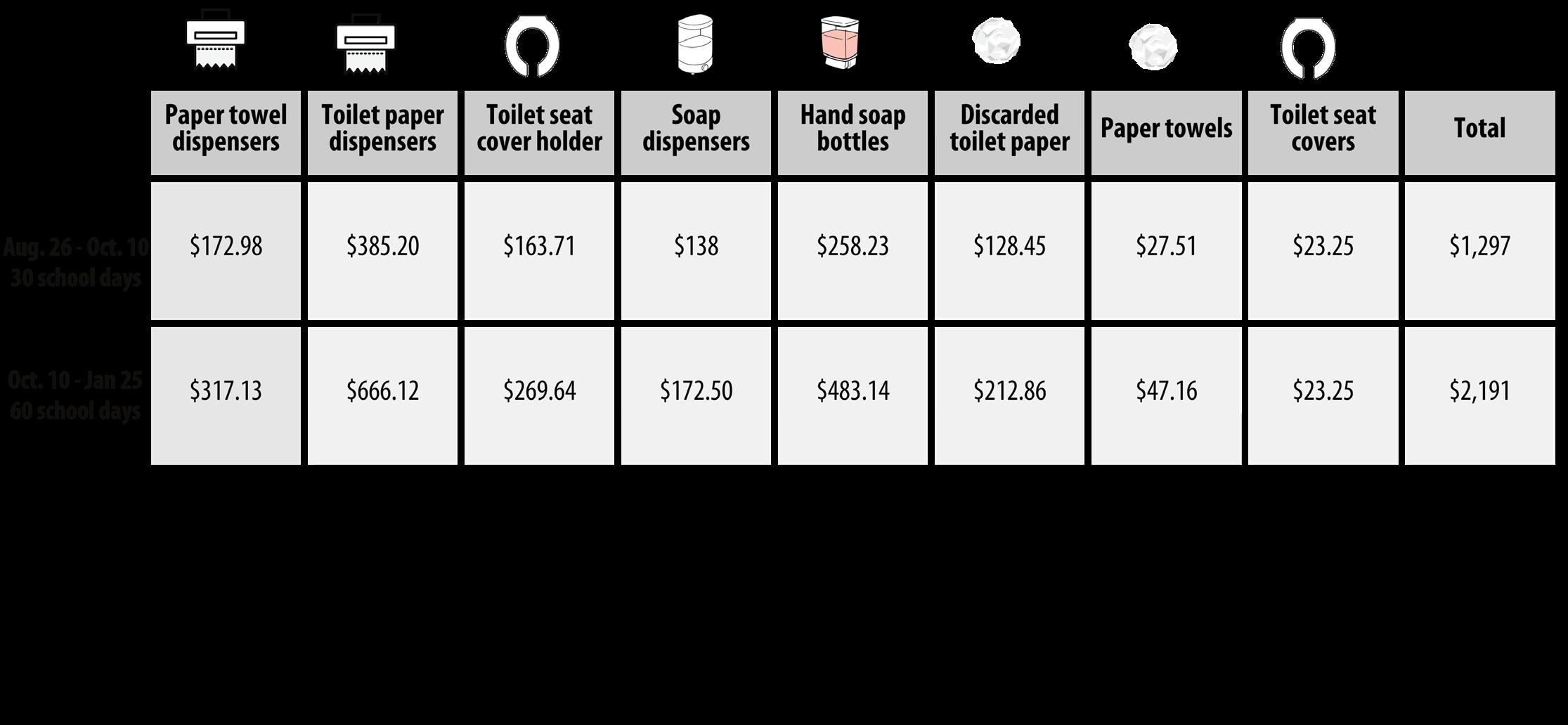
“It’s hard balancing everything out, but we just have to make do,” he said.
Low bathroom supplies and student misbehavior have been a nuisance for senior Diana Fine, who said that despite access to menstrual products at places such as the Wellness Center, it’s inconvenient when they’re not available in the bathroom.
“There have been so many instances where I had to call or text my friends in class to bring me some kind of supplies, which takes away from my learning time and theirs,” Fine said. “I’m upset that it takes me 15 minutes to pee because there are kids climbing the stalls, hotboxing the bathroom or I can’t get to a feminine hygiene product.”
Two gender-neutral bathrooms were also constructed in the past year, but due to student behavior within them, one had to move to a more visible location near the front gates. Thus, for nonbinary students like Albano who often use gender-neutral or men’s bathrooms, the struggle to obtain menstrual products is even more prevalent.

“Though I disagree with the taboo of periods, students like me shouldn’t have to put themselves in a possibly emotionally vulnerable position just to be able to practice basic hygiene on campus,” he said.
Albano said that in the past year, the gender-neutral bathrooms have not provided the protection and security they were built for. He’s had to avoid these bathrooms, one of which recently had its stall door torn off.
“Considering the bathroom culture at Bran-
ham, I have to make accommodations just to be able to have access to a bathroom,” Albano said.
Students have voiced various possible solutions in fixing this issue, including placing dispensers in each individual stall or advertising other areas that have these products available, such as the Wellness Center and the office.

Fine said more rigorous consequences for bathroom destruction may be a solution.
“I hope to see the admin hand out stricter consequences for students who vandalize the restrooms,” she said. “I recognize this is very much a student issue, and it really confuses me what the motivation is behind their actions with supplies they also need to use.”
Albano hopes to see an overall shift in not just student vandalism, but in the perception of menstruation as menstrual products are still a necessity that deserve the same respect as other supplies.
“I’m really proud of the school for implementing gender neutral bathrooms, but I’m sad with how the student body has tarnished this chance to allow queer students on campus a safe haven restroom,” he said.
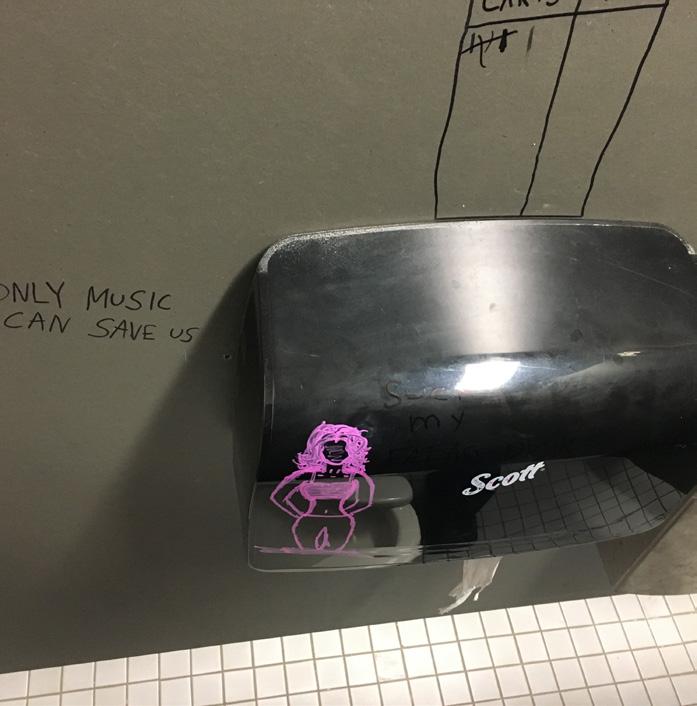
Editors-in-Chief | Jiyoon Choi and Nolan Zils
Editors
Art director: Erica Kang
News
Editor: Alli Wang
Opinion Editor: Alli Wang

Arts and Entertainment Editor: Ava Stark
Science and Health
Editor: Angela Choi
Student Life Editor: Reese Gardner
Sports Editor: Alan Schaeffer
Online Editor: Sahasra Makamchenna
Staff writers Juliette Bonacum, Mila Windell, Makayla Wu, Lia Choi, Owen Dazko, Carissa Takaki, Shantala Murujanugan, Aresema Agdie, Ryan Walters, Aadyant Suresh, Anabelle Walker
Guest artists: Dhatri Tummala and Grace Ngo
Adviser: Fitzgerald Vo
Statement
student body.
Website: www.bhsbearwitness.com
Phone: (408) 626-3407
Email: bhsbearwitness@gmail.com
Address: 1570 Branham Lane, San Jose, CA 95118
BEAR WITNESS | FEBRUARY 2023 | BHSBEARWITNESS.COM 13 NEWS
“When I started singing and performing, it was just automatic. I knew that I loved it and it just felt natural to me.”
Soohomore Maya Drake, who is one of the youngest nominees for CMTSJ’s Frank Frye Award in vocal performance.
“We’re not here to yell to the crowd or anything. We’re here to just be together and share in what we’re feeling what we’re experiencing.”
Dorothy Hwang, an attorney for Asian Law Alliance, whose group organized a vigil for victims of the mass shootings over the Lunar New Year weekend.
VANDALISM
Costs of bathroom vandalism
“We have a longer way to go than the generation that came before us.”
Flower F. who spoke at this year’s Women’s March on the impact that the overturn of Roe v. Wade
From PAGE 9
“Students like me shouldn’t have to put themselves in an emotionally vulnerable position just to be able to practice basic hygiene.”
Finn Albano Junior
Vinnie Ramos Recent bathroom damage, including dismantled urinals, that custodial staff have had to repair.
Courtesy of
Source: Vinnie Ramos, plant manager
is committed to providing accurate, timely coverage of local and world news while connecting these events to the lives of our
Mission
The Bear Witness
diverse
Personal connections brought Iran conflict home
It can be difficult to spread awareness or stay up to date on current issues, even with the prominent influence of social media. The impacts of school events can be productive in a sense that they spark conversations in the student body about these issues.
Even so, sometimes their influence is hard to see. But with the recent Iran Awareness Week, the organization and productivity of the daily events clearly showed a rise in school awareness of the recent protests in Iran, bringing the school together.
Sparked by the killing of the young woman
Mahsa Amini for not wearing a hijab, Iranian protesters, largely women, are striking out due a lack of personal freedom. Senior Tara Kaviani
Editorial
The opinion of the Bear Witness editors
and sophomore Avishawd Yarisaied wanted to do something at Branham to show their support, so they co-organized the project. Uin the works for around two months, Iran Awareness Week allowed students to write letters to their local representatives and Iranian protestors, brought in speakers from Bay Area for Iran, held a vigil, and got many students involved in the other daily activities.
URBAN DEVELOPMENT
The speakers from Bay Area for Iran, a local nonprofit organization trying to “be the voice of people in Iran fighting for regime changes,” were especially effective, sharing information in English classes on the situation in Iran and letting students know what they can do to actually make an impact. The organization was there throughout the week, helping with activities and supporting Friday’s vigil.
Having speakers like this in classrooms can help spark discussions, making the impact of what the speaker is presenting very impactful in comparison to just a lecture. Engaging students in discussions helps their brain process information better, as well as allows them to be comfortable sharing their ideas with their
SAN JOSE LOSING ITS CHARM
Timeline of Cambrian Park development
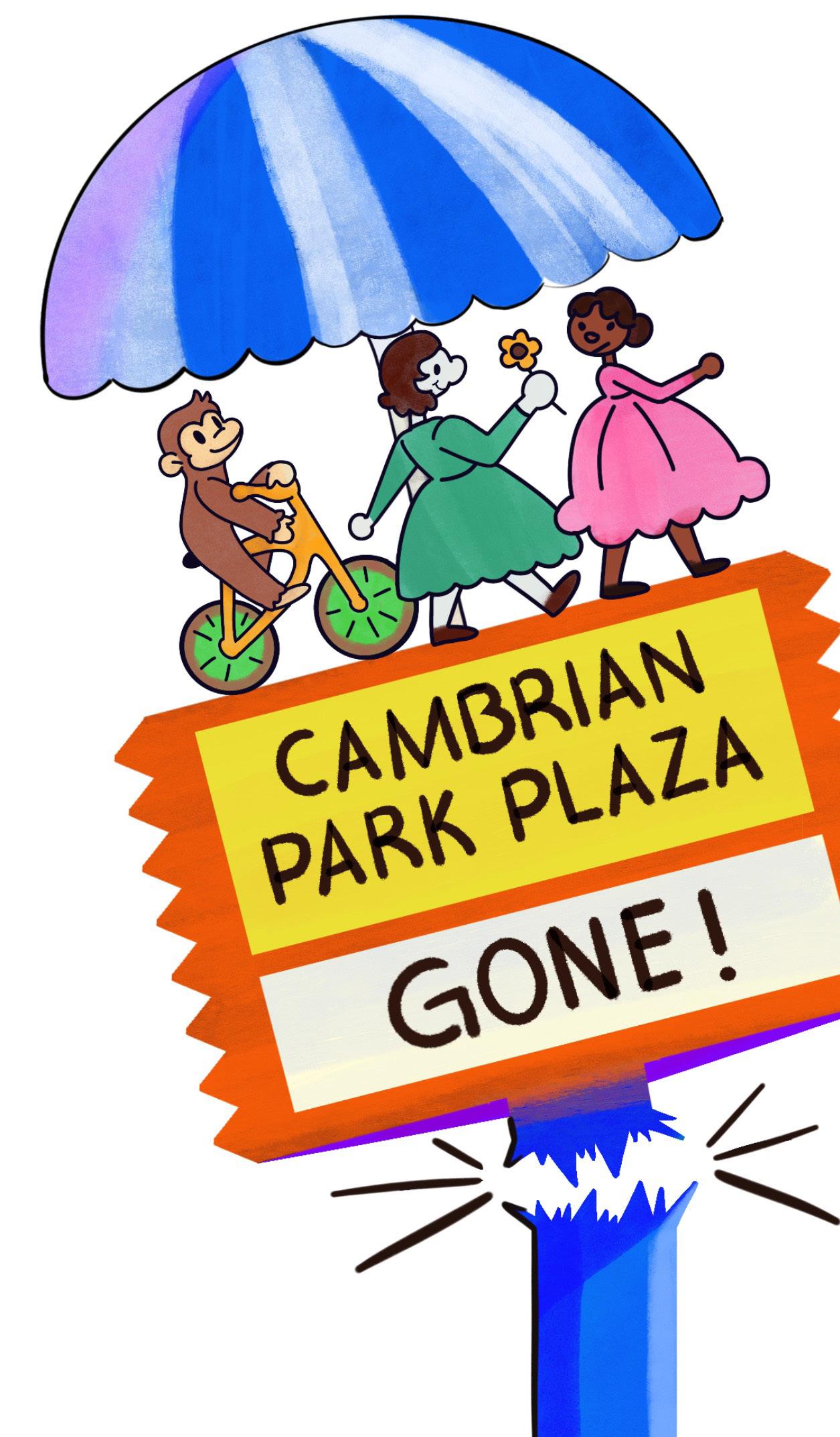
1953
Cambrian Park Plaza opens
The 17-acre land was developed by local Paul Schaeffer. Ownership remained in his family until 2015. Cambrian Bowl becomes a well-loved anchor.
2002

Santana Row opens
This was San Jose's first high-end mixed-use shopping center, and took inspiration from the cobblestone streets and the plethora of fountains in Europe.
2016
Cambrian Park redevelopment plans
Weingarten proposes the preliminary plan for the redevelopment of the Cambrian Park Plaza to the city to make it another high-end mixed-use facility. Cambrian Bowl closes.
2022
Redevelopment plan is approved City annexes the shopping center and approves the develoment plan by Kimco (formerly Weingarten).
BITE-SIZED OPINIONS Minor problems, minor solutions
RYAN WALTERS Staff Writer
Looking at the city of San Jose in the year 2023, it’s hard to even imagine a world in which San Jose had hundreds of farms from street to street. But due to the tech boom and modern developments, many remnants of the past are slowly disappearing.
With the unanimous decision by San Jose City Council made in the latter half of 2022, the Cambrian Park Plaza, which has stood nearly 70 years since its completion in 1953, will officially begin its redevelopment into Cambrian Village.
Famous tenants of the plaza included Cambrian Bowl, which had stood for 55 years before closing in May of 2016.
The investment group that now had control over the plaza may have seen many run-down buildings on the edge of what seemed like collapse, but to many families like my own, it meant something more. Whether that be the countless birthday parties or friendly tournaments the bowling alley hosted, every resident in the immediate area has a core memory of a trip to the lanes.
When the International Business Machines Corporation (IBM) arrived to San Jose in 1943, the seeds of Silicon Valley’s future had been planted. IBM would be a pioneer through the 1960s and 70s, as companies such as eBay, Google and Apple would later construct headquarters in both San Jose and its suburbs.
Those same multinational software companies have since then had their fingerprints on everyday lives and even in schools. Gen Z residents raised in San Jose grew up parallel to the 21st century technology boom of Silicon Valley.

As recent as ten years ago, you would never see a teenager glued to their phone like you see now. As kids, we would have never imagined having a TV in classrooms, much less ones where you don't need a VHS tape. We would have never imagined using computers beyond the ones we would use to fool around in the computer lab. Now, computers are so
widespread that this article is being written on a school Chromebook. Kids even spent an entire school year of their lives in 2020 using Zoom, a San Jose based company.
Even before people flocked to the area in the hundreds of thousands over the past 60 years, San Jose and its neighbors held lots of popularity. Take the Cow Palace in Daly City, which had hosted two separate Republican National Conventions (1956 and 1964), and eight years of Warriors basketball.
San Jose residents have been so surrounded by high-tech influence for decades that places such as the famous Winchester Mystery House, an ordinary house turned a remnant of 19th century architecture and itself uninfluenced by high-technological advancements, has been turned into an everyday tourist attraction that have aspects that can only work through said high-tech advancements. Technology is such a huge part of our city that it’s impossible for any building to be unaffected by its influence.
As long as Silicon Valley itself continues to maintain its success, more people will want to live in the area, and as a result, the city of San Jose will continue to tear down buildings from the preliminary days as a major city in favor of high-technology spectacles.
Eventually, it’s entirely plausible that the Cambrian Village itself will become decrepit and will be replaced by a brand new project, solidifying the cycle that a place rich in nostalgia for one generation will be replaced by something new, foreign, and soulless to those older generations, much like we’ve seen with the residential outrage when the plan of Cambrian Village initially was proposed.
Change is necessary for the city of San Jose to move forward and grow, and the tech boom has put San Jose on the map for years to come. However, what the city used to be should not be completely wiped out in the current efforts of development, or the memory of the old San Jose will fade away.
peers. Additionally, having information about the cause before or during the school events can give students an understanding about what they can actually make a difference in.
At the late Jan. 27 vigil, students, staff and community members were brought together through a garland commemorating Iranian victims, donations, and influential music including “For Women, Life, Freedom” and the Iranian national anthem. Not only did this event bring together Branham students but also students from other schools, alumni, and other members of the community, all making an effort to show their support and be together in a challenging time.
Problem: Private schools in San Mateo have alpaca days where alpacas come to the school for stress relief. Why can't we have that?

Solution: We should replace the practice field with a petting zoo-full of alpacas.
— Lia Choi
Problem: Senioritis. I thought it was a myth but it's real and it's hitting me like a truck. Solution: Have a desig- nated school holiday in November where seniors get a week off. They can either spend that time recovering from burnout or getting college apps done, so it's a win-win!
— Nolan Zils
Problem: When walking in the tightly packed hallway, there's always a couple people who choose to spray on a few more pumps of perfume than necessary which gives you pounding headaches.

Solution: Ban all types of perfume or cologne or spray fart spray on everyone so everybody smells the same.
Sahasra Makamchenna
—
Problem: It is very cold in the morning for winters and too hot in the afternoon during the summer.
Solution: Let school start at 12 p.m. during winter and 6 a.m. in the summer.

—Aadyant Suresh
Problem: There are too many non-49ers fans, as if there are any other options for Bay Area football fans now that the Raiders have left.
Solution: We need to kick all of them out to the cities their teams are in.
—Owen Daszko
14 BEAR WITNESS | FEBRUARY 2023 | BHSBEARWITNESS.COM
OPINION
IRAN AWARENESS WEEK
Modernization is taking away remnants of the past and fond memories for those who've lived here for decades
The iconic carousel sign will be the only thing that's left after the Cambrian Plaza becomes a mixed-use area.
Illustration by Dhatri Tummala
BEYOND ESSAYS | ChatGPT provides reasons how it can be useful in the classroom.
Writing skills
Encourage students to practice writing and improve their writing skills by using ChatGPT to write essays, summaries, and other writing assignments.
Context
Enhance students' knowledge of various subjects by using ChatGPT to provide quick answers to their questions and provide additional information on specific topics.
Vocabulary
Help students expand their vocabulary by using ChatGPT to provide definitions for difficult words and phrases.
SIRI, WHAT ARE THE DIFFERENT AI SERVICES? Artificial intelligence has grown into a daily necessity
Chatbots
GPT-3 (Generative Pre-trained Transformer 3): An AI language model developed by OpenAI that can generate human-like text.
Mitsuku: An award-winning chatbot developed by Pandorabots that can hold conversations with users and provide information on a variety of topics.
Virtual assistants
Siri, Alexa and Google
Home are AI-powered virtual assistants that can perform a variety of tasks, such as setting reminders, making phone calls, and sending messages.
Image recognition
Amazon Rekognition: An image and video analysis service that can identify objects and people in images, analyze video content, and detect inappropriate content. TensorFlow: An open-source machine learning library used for a wide range of AI applications, including image recognition and analysis.
Critical thinking
Encourage students to engage in critical thinking and problem solving by using ChatGPT to pose complex questions and provide them with feedback.
Recommendations
Netflix Recommendation
Algorithm and YouTube
Recommendations provide personalized movie and TV show recommendations to users.
How to tune out
MILA WINDELL
Staff Writer
Sophomore Erynn Wolfe is a competitive dancer and was unable to attend last year’s homecoming dance. She had a dance choreography lesson that day.
Seeing all the posts on Instagram of her friends at the dance made her feel left out, and it wasn’t the only one she missed due to a scheduling conflict.
“It just sucks cause I feel like I’m not getting the real ‘high school experience’ that everyone else is living.”
Sources: ChatGPT, New York Times
AI | A tool, another way to cheat, or both?
also ranked by the developers to train the program on comparing them.
Its use for class assignments has particularly come under recent attention. In an experiment, Joanna Stern of the Wall Street Journal used ChatGPT to write an AP Literature essay on “The Metamorphosis” by Franz Kafka. The essay received a passing score of 3 out 6 on the AP grading scale, although the teacher who graded noted that the writing could have been more vivid, and that it had misattributed quotes.
Its use in a classroom environment has sparked some concern among teachers and whether students will misuse it, passing off ChatGPT work as their own.
An academic threat?
An article in The Atlantic titled “The college essay is dead” described how a student used an AI tool to write an essay, justifying its use by comparing it to Grammarly, which suggests editing suggestions.
AP Language teacher Barbara Arduini disagreess, and has addressed the issue in her AP classes by asking students to not use the program.
Put bluntly, don’t use ChatGPT for your essays, she said.
“I think that there’s a difference between sentence level corrections, like Grammarly or spellcheck, and the logical organization of ideas (that ChatGPT provides),” she said.
The concerns also stretch into the gray area of copying and plagiarism, since ChatGPT creates writing that is informed from other available online sources.
“It’s certainly academically dishonest because it’s not actually your own writing,” said Arduini, warning that if more students use it, “I will have students write on paper or do things in class so I can actually assess their growth.”
She also finds that using AI in classes would interfere with student learning and gaining critical thinking skills, calling it a crutch that slows down development.
She also does not want to grade work done by a computer, not sold on its benefits to humanity.
“I kind of wish things like this didn’t get invented,” she said.
SCIENCE&TECH BRIEFS
Long COVID, a hindrance for workers
Long COVID, a condition in which patients do not completely recover from COVID-19 and have ongoing symptoms due to a virus cell damage, has been significantly affecting and harming the United States’ work force. According to a new analysis of workers’ compensation claims in New York, this recent phenomenon has prevented substantial numbers of people carrying the virus from returning to work for
Shared on TikTok
William, the student who used ChatGPT for his review on “Shrek: The Musical,” first heard about the program from Tik Tok. He said he’s used on at least three assignments
Though William considers the use of ChatGPT academically dishonest, he would still recommend it for another student who was in the same position.
“I don’t feel like it’s a big deal because it was a small assignment about a play and I only had to pass for one semester,” William said.
On the other hand, he supports the school regulating the use of ChatGPT for homework assignments.
“If I was a teacher and my students were turning in assignments that they did not write, then what would be the point of it?” he said.
The student said he does not plan to use the program further since it’s growing more popular and teachers are becoming more aware of it.
Avenues for classroom use
Comparing it to another tool like a calculator or the internet, computer science teacher Steven Turner sees room for AI use in his class.
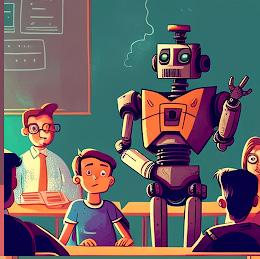
Students can responsibly use ChatGPT on their homework as they have used the internet as a resource, perhaps to help fill in gaps in their complex coding projects with prior permission.
Sophomore Kai Chua is in AP Computer Science A and said he would be interested to use ChatGPT in a project. Chua and his group have given presentations on the ethics of its use.
“I would like to see how the logic behind ChatGPT works, and I am quite interested in trying to build a project out of it,” Chua said.
But they still have to understand the programming concepts, like when students learn to use integrals before using their graphing calculators.
Over the summer, he turned down students’ requests to use AI on a homework assignment, especially since students need to eventually be prepared for the on-paper AP exam.
“AI would remove that skill that you’re going to need in May,” Turner said.
As part of AI’s growth, Turner also said there may need to just adapt to the growing use of AI in the classrooms. Rote memorization will be unnecessary
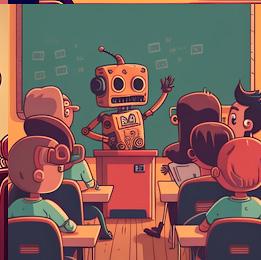

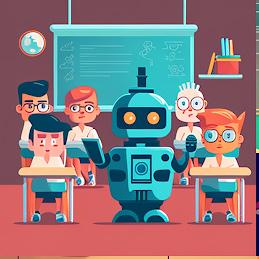
six months or more as they needed continued medical care for prolonged periods of time even after returning to their jobs.
Lia Choi
—
Changes to blood donations from gay men
The Food and Drug Administration has announced its plan to change the policy banning most gay and bisexual men from donating blood, which had been in place due to concerns over the spread of HIV. New studies and changes by Britain and Canada have led to the planned changes. New rules will instead be based on sexual
since “AI can retrieve it even faster than you can put it into Wikipedia,” he said.
For future students who will be growing up with ChatGPT, the challenge will be to manage its use. Furthermore he said AI is a source for more discussions on ethics, especially in his classes.
“There will come a day I will a teach a student who has been alive as long as ChatGPT and they’re going to have to figure out ‘why do some people feel like I’m cheating where I don’t feel like I’m cheating?’” Turner said.
Detecting AI use
Since ChatGPT debuted late last year, schools in New York City have blocked its use, and district chromebooks have also blocked the OpenAI website.
The company’s CEO Sam Altman said that the program should not be used for important purposes and the company does not want it to be misused in schools.
Chua also sees the growth of ChatGPT impacting education similar to the presence of Google today in that it will be moderated with the appropriate countermeasures.
In fact, such programs are already being developed.
Princeton University senior, Edward Tian, has developed GPTZero, a tool that tries to find out whether an essay is written by a human or ChatGPT.
If a text is more complex, the program associates it with a human author. Similarly, sentences of irregular lengths are associated with humans, compared to AI which has sentences that are around the same length.
OpenAI has also released its “AI Text Classifier” but acknowledges its limits, with it not always correct and requiring at least 1000 characters to work.
Turner sees artificial intelligence having a larger footprint in the average person’s daily life.
He equated it with the internet, which started as a tool for researchers but is now an integral part of daily life. AI use, already present in self-driving cars and smart assistants, is still in its infancy but may eventually have a large place in our society.
“(AI is) going to start trickling down to consumers more and it’ll be really cool to see what people come up with to use AI in creative ways,” Turner said. “I think it will definitely change, now, if not in the near future, how we interact with technology.”
activity and use of injection drugs. Use of injectable PrEP for HIV will bar an individual for 2 years. The changes as America’s blood level is low due to the COVID19 pandemic and has been applauded by LGBTQ activists.
— Aadyant Suresh
AI being used to image virus proteins Artificial intelligence, DALL-E, uses a technology that allows them to generate images by simply describing it. DALL-E functions on a mathematical system called a neural network which analyzes a large
amount of data to then recognize and pinpoint the patterns for specific items and situations. The technology used by DALL-E is now being used to create proteins that humans have never seen before, such as ones that battle cancer or COVID19. With a mere description of the image, the A.I. will be able to generate an image of a potential protein. However, these proteins still require further laboratory testing to confirm their fidelity.
— Tae Yun (Erica) Kang
Wolfe feels stressed while scrolling on social media because she is pulled into the pressure to be a part of what her friends are doing. Otherwise, she feels “left out of the loop,” since there’s this social pressure to fit in and conform with everyone else. With social media blending into our everyday routines, the fear of missing out—FOMO — has become a typical feeling, especially in the high school environment. Some studies find that 81% of participants experience FOMO often.
Not only does social media create FOMO among students who see their peers doing something they’re not, new Branham Wellness Center specialist Monica Hylbert said that social media manufactures images, videos and music that triggers teenager’s most primitive emotions.
Hylbert said a part of your identity is stripped away because your interests become based on what influencers are intrigued in.
Students tend to lose themselves in social media and use influencers to act as their avatars where they can live their life vicariously through them. Eventually, students begin to lose their individuality and ultimately abandon their unique self.
“You’re not gonna be a clone of that person you see on social media,” she said. “Because you are your own person. So let’s develop that. Everyone’s unique.”
To avoid the negative effects of FOMO, Hylbert recommends students to slowly replace their bad habits with small changes throughout their day, from controlling your reaction to friends’ feeds, or doing anything that makes them feel good.
“It takes time. It’s a recipe that changes everyday. But it’s the recipe of life,” Hylbert says, “You are worth it to take time for yourself. It’s not selfish. It’s rewarding because you are tired of what you are practicing, and you’re ready for change.
For her part, Wolfe uses dance as her outlet to reduce anxiety from FOMO, even if she misses big school events. In the grand scheme of things, it’s not the end of the world if you miss them.
“On your deathbed, you’re not gonna think about what would happen if you went to that one football game in high school,” Wolfe said.
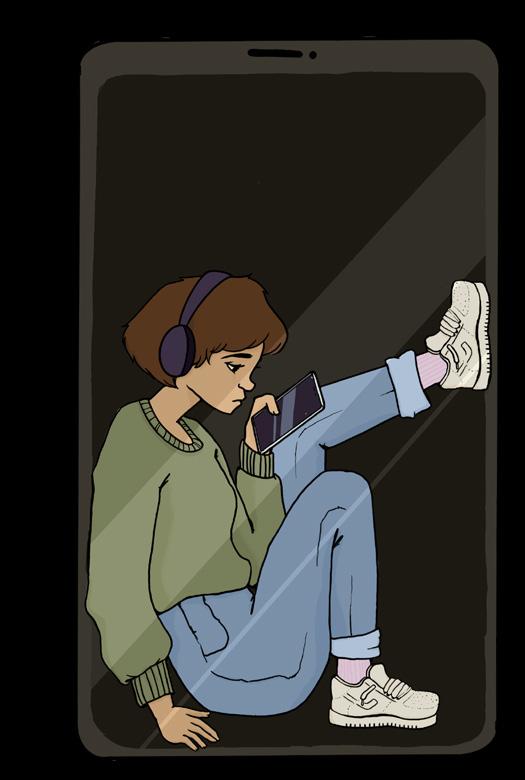
BEAR WITNESS | FEBRUARY 2023 | BHSBEARWITNESS.COM 15 SCIENCE & HEALTH
From PAGE 9
SOCIAL MEDIA
FOMO
Dee Nguyen/Bear Witness
METEORIC RISE of the
Cup win? Or will he fall short once again and be forced to end his career without ever earning the world’s most coveted trophy?
The bell rings, and students file out of their classes into the halls, making their way to the next class. But not all.
Some students in Menera’s class stay put. They’re all packed up, but they’re glued to what’s on the projector screen, breathing heavily, watching nervously.
At the final shot, when Argentina striker Latauro Martinez scores his penalty and pushes Argentina through to the semifinals, cries are heard around the school, as students’ hopes are either kept alive, or broken with one kick of the ball halfway across the world.
Dec. 18, 2022: World Cup final
It’s early on the first Sunday morning of winter break, yet 26 million people across the country have tuned in to see if Messi will win his first World Cup, or if future star Kylian Mbappe will lead France to back to back victories, an extraordinary feat for the 24-year-old.
Branham students were among them. Some have stayed the night at their friend’s house to watch the game together, and the girls varsity soccer team locked themselves in the gym overnight to watch as a team.
Two hours and 53 minutes after kickoff, Argentina won the match on penalties. Almost immediately, posts flooded social media from Instagram to Snapchat to BeReal, as students shared their reactions and reposted the scores and stats from the historic game.
Shortly after the win Lionel Messi’s Instagram post, a picture of the Argentina squad lifting the trophy made history, as it amassed over 75 million likes within the first few days.
The World Cup at Branham
The 2022 final set a record for the most viewers, as early figures estimate approximately 1.5 billion people watched some part of the historic game (FIFA). This year’s 26 million viewers in the United States became the second highest viewership for any World Cup final in America, falling just short of the 27 million Americans who watched in 2014, and far behind the 99 million viewers that watched the 2022 Super Bowl between the Los Angeles Rams and the Cincinnati Bengals.
However, the 2022 World Cup craze was ever prominent at Branham, from the first game over Thanksgiving to the last game after finals week.
Streaming traffic data from the district illustrates this effect, as December saw the highest incoming internet traffic for the whole year, peaking at almost 6,500 megabytes per second. In January, that number dropped to around 3,500 Mb/s.
Even with so many students trying to sneak the games on their phones or computers in class, some teachers actually supported those who were trying to watch and showed it on the projector. Spanish teacher Damian Fragano and U.S. History teacher Stefanie Menera both had games up for students to watch while doing their work.
“I feel like it’s something that students really care about,” Menera said. “And since the World Cup isn’t traditionally during the academic school year, I feel bad that students would have
‘The sport of the future’ in U.S.
52% more
adults say that they are soccer fans compared to 2012, outpacing the other four “major” American sports, with ice hockey (+42%), basketball (+27%), and baseball (+8%). American football (-7%) actually losing fans.
32% growth
in youth participation from 2002 to 2019 – beating out baseball (6%), hockey (7%) and basketball (-6%) and football (-2%) where participation dropped off.
2026 World Cup

the World Cup returns to North America in four years, and is expected to bring more enthusiasm to the sport down to yout sports, especially among ethnically diverse communities.
— Source: The Future is Futbol: 2022 Telemundo study
to miss out on something that is so important to them, especially those that are soccer players or who just follow soccer.”
Even though she would encourage her students to multitask and get their work done while watching, Menera says she did notice a good number of kids tuning into the games when they were on.
“When the World Cup is on, I would say that like 90% of my students are watching it and there are very few who aren’t,” she noted. “I feel like if I didn’t play it for them they would find alternative ways of watching it anyway and I would really rather grant them a space and opportunity to watch casually than constantly be sneaking it on their laptops and phones.”
Menera, who grew up in a Mexican household, says that soccer is a part of her family experience and cultural identity, and is happy that other students are getting interested as well. She points out that during the summer when
Soccer’s growth in U.S. precedes Qatar’s World Cup by more than two decades
WORLD’SGAME
Students stream the match between the U.S. and Iran after the lunch bell rings on Nov. 29. Streaming the Qatar World Cup on the district network reached more than 6,500 megabytes a second at its peak.
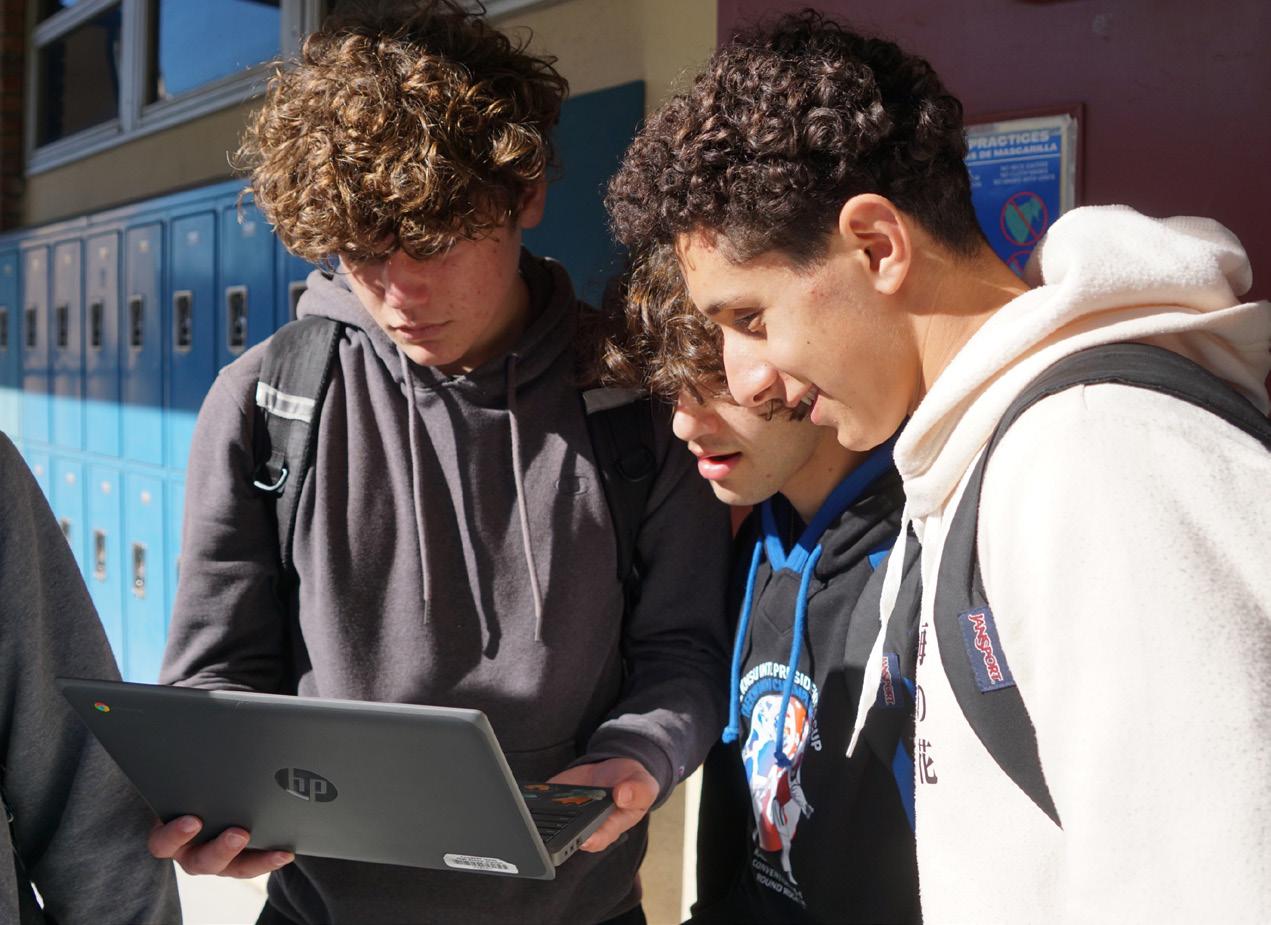
the World Cup usually takes place, many kids are working or going to summer camps and the tournament doesn’t end up as the central focus of their lives. The tournament is supposed to be held from June to July, but was moved to November to December in 2022 due to host nation Qatar’s extremely hot and dry weather.
One of her most memorable experiences from this tournament, Menera says, was the penalty shootout between Argentina and the Netherlands.
“I have definitely had a couple of students on the verge of tears during crucial games that become very intense,” she said, describing a time when some of her students stayed after class and joined arms because of how invested they were in the game. “It was just so cool to see some camaraderie among students as fans and players so that stands out to me.”
On the rise
If the 2022 World Cup proved one thing, it was that soccer is on the rise in the United States.
Bay Area sports writer Favian Renkel, covered the World Cup for Forbes Betting and also hosts a podcast that focuses on San Jose Earthquakes related news, backs up this claim, saying that soccer has the potential to be one of the three most popular sports in America by 2030.
Renkel has also seen significant increase in popularity and engagement locally, which he attributes to the large Hispanic population and influence in the Bay Area.
“I started appearing on a show in 2020 about the San Jose Earthquakes and now, I get player interviews almost every week. The fandom comes in waves,” he said.
When San Jose signs star players from top Mexican teams, fans of those teams in the Bay Area start following the Earthquakes more closely.
“We noticed a big increase in engagement when [Mexican star Chofis] played for the Earthquakes,” he said.
Additionally, Renkel believes that the new Leagues Cup, a tournament that will feature both MLS and Liga MX teams, will bring more attention to local soccer when it debuts in July.
“Once the San Jose Earthquakes play Chivas in a competitive match, people are going to wonder who these local players are and if they are any good,” he says.
Pitting Liga MX teams, the most popular league in terms of California fanbase, against local MLS teams such as the Earthquakes or Los Angeles FC should increase viewership and fanbases in the area, as the sport becomes ever
The shift from traditional American sports like baseball and American football to soccer is becoming more and more rapid.
Time Magazine reports that the MLS has seen a 25% attendance increase from last season, while high school soccer participation has seen a 32% increase since 2002 according to Telemundo. This can also be partly attributed to the growing Hispanic demographic across the United States, as is being shown in Bay Area soccer.
Kadah, who is the longest tenured coach at Branham, says that the growth of the soccer culture over his 19 years hasn’t always been expressed in the participation numbers – though those have consistently increased at a steady rate.
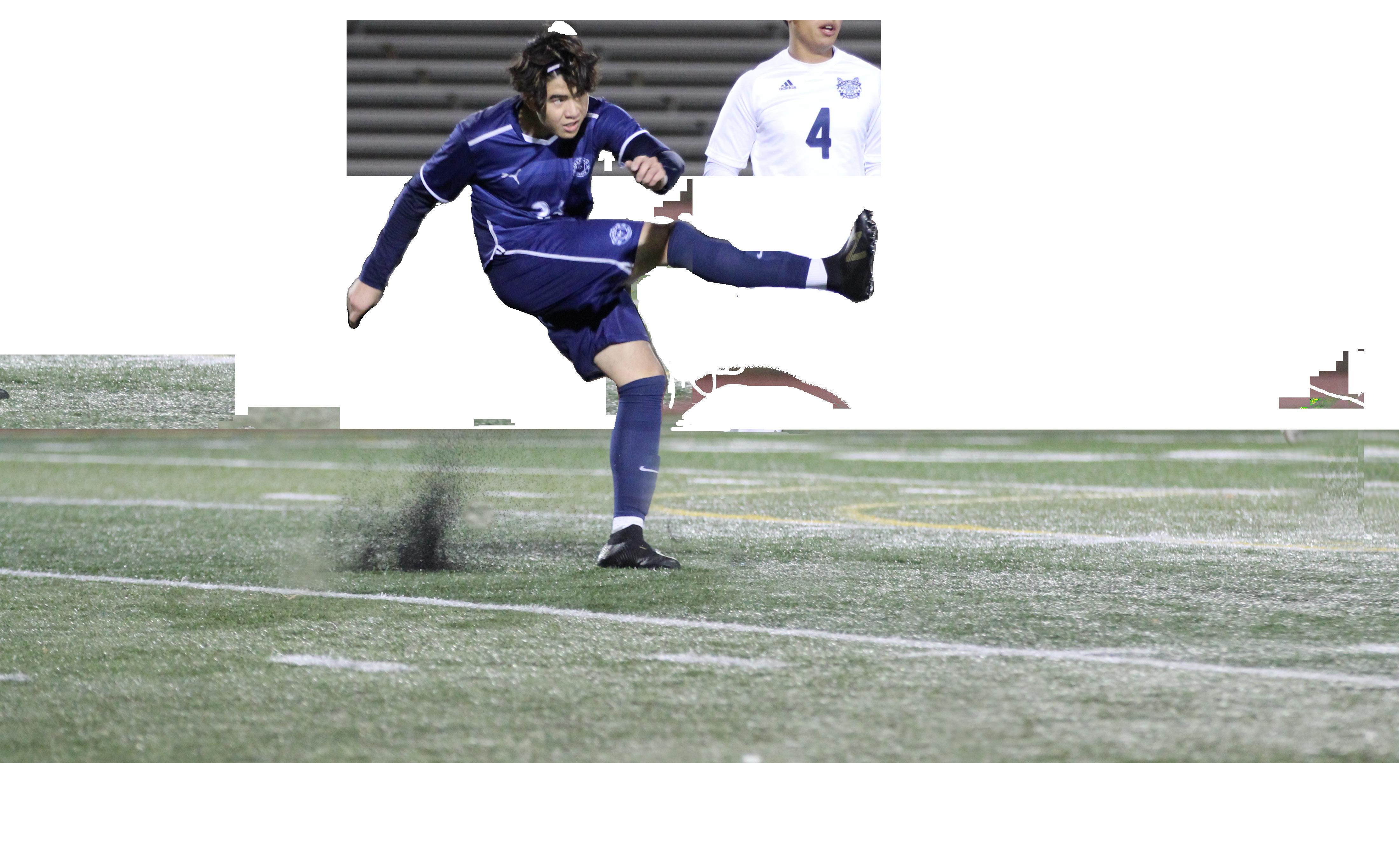
“The thing that I noticed over the last seven to 10 years is that guys are talking about soccer constantly,” he said. “I hear discussions about the Premier League and other professional leagues much more often than I did when I first started.”
The surge this season can be attributed to two things, Kadah said. The first is the unprecedented success that the varsity team saw last year.
The Bruins spent most of the season ranked no. 1 in CCS, won the league, and beat local giants such as Bellarmine, Mitty, and Juniperro Serra, before falling 1-0 in the Open Division final to Watsonville. The team also had a 21 game unbeaten streak and were undefeated in league play.
The second factor is the strength of the incoming freshman class. An incredible amount of freshmen tried out this year according to Kadah, and there are around 30 freshmen across the three teams.
Years prior, typically around 60 hopefuls would sign up year in and year out. The introduction of the freshman team in the 17-18 season saw that number creep up slightly, and Kadah says that having strong JV and freshman teams has led to the success of the program as a whole.
It doesn’t stop on the field either. Although still nowhere near rivaling the attendance for football games, Kadah says the turnout for soccer games has also increased. However, the cold and rainy weather this season may have suppressed numbers as well.
“We have seen some huge crowds during the postseason,” he said. “The CCS semifinal versus Bellarmine last year was one of the most memorable, and the stands were nearly packed for that game.”
America’s Soccer Future
After achieving notable success as the youngest squad in the tournament, the future of soccer looks bright for the United States and 2026 could bring even greater success for the USMNT and the Branham soccer program alike. In the meantime, the world’s game will continue to bring people together, uniting people from different backgrounds, different cultures, different experiences, and allowing them to experience soccer the way it was meant to be experienced: together.
“It’s a global sport. It’s the most popular sport in the world,” Menera said. “And I think that a really strong sense of community comes with that. It’s cool to see students becoming fans for the first time due to this World Cup and their friends sort of helping them into this world of soccer.”
16 BEAR WITNESS | FEBRUARY 2023 | BHSBEARWITNESS.COM SPORTS THE WORLD CUP
Though soccer is the world’s premier sport, it has seen major growth in the United States in the last two decades.
Alan Schaeffer/Bear Witness photo illustration
Lia Choi/Bear Witness
THE
Sports briefs
Boys basketball
JV: 6-13, 1-8 (League)
Varsity: 17-6, 4-5 (League)
Despite starting off the season strong with a 13-1 record, the Bruins struggled in league play, although they are still on track for CCS.
Girls basketball
V: 17-1, 7-0 (League)
Varsity: 20-3, 9-0 (League)
Both JV and varsity are having sensational seasons and both remain undefeated in league play, dominating most of their games. Varsity is ranked No. 83 in California and #3 in CCS Division 1.
Boys soccer
JV: 7-9-1, 7-3-1
(League)Varsity: 8-7-3, 6-3-3 (League)
Although they aren’t having the success that they did last season, the varsity soccer team is still on track to qualify for CCS, as they defend their third place spot in the league standings.
Girls soccer
JV: 11-6, 6-4 (League)
Varsity: 6-7-5, 3-5-2 (League)
Varsity sits in fifth in league standings, and needs to get results in their next couple of matches in order to qualify for CCS this season.
Team competitive cheer
TCC has participated in two competitions this season, finishing secondnd both times.
They also finished 2nd out of 6 teams in CCS and qualified for nationals. They will head to Anaheim at the end of Presidents’ Week
— Compiled by Alan Schaeffer
For the latest updates and home game recaps, visit bhsbearwitness.com or follow us on social media: @bhsbearwitness
OUT OF THEIR LEAGUE
Why is Competitive Cheer not like other school sports? Blame it on the state, for-profit organizers
REESE GARDNER Student Life Editor
The Traditional Competitive Cheer team this season won second place in the varsity cheer small novice division at CCS invitational at Independence High School in Jan. 16, following 2022’s first place win.
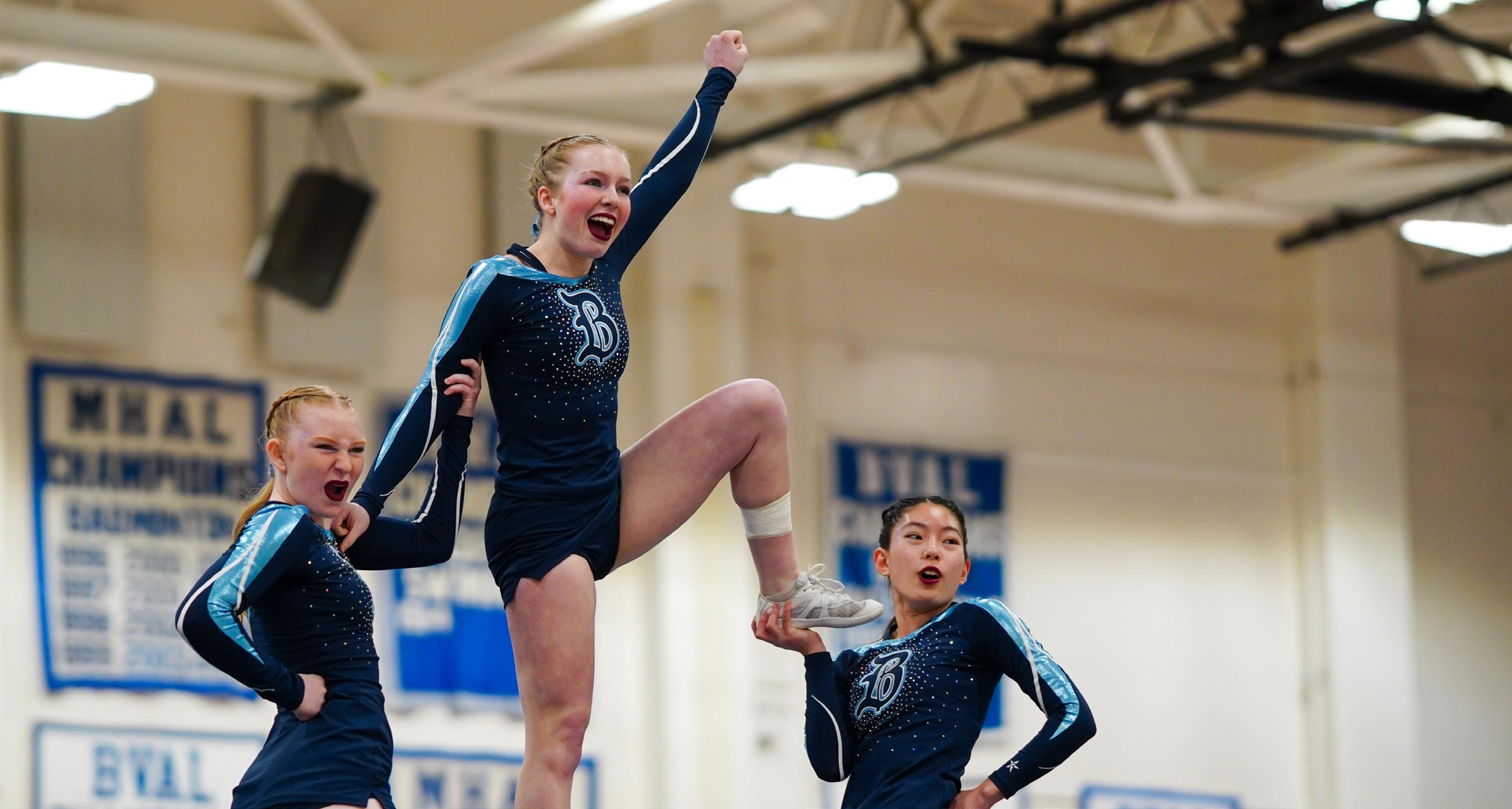
Despite recent successes, the team does not have a banner like other championship teams from other sports.
This is because the distinction between the terms invitational and the championship is important. Due to the lack of TCC teams in the area, there is no option for a qualifying competition to be held for a CCS championship to take place. Unlike other sports, there is no Blossom Valley Athletic League, BVAL playoffs and CCS or state championships.
Instead, the team later this month will be heading to the Varsity Cheer Nationals in Anaheim, where Varsity hosts its Nationals competition. Varsity is a private, for-profit group that organizes these events that draw hundreds of teams.
“Having cheer become an official sport in California is like taking a square peg and trying to fit into a round hole,” said Athletic Director Landon Jacobs.
Due to CCS and California Interscholastic Federation rules and the dominance of for-profit companies that host TCC competitions in California, cheer is one of the most expensive sports at school.
“CCS is important,” said captain Marissa Pepitone. “When people ask ‘Oh do you have CCS’ we do, cause we are a sport.”
In TCC teams can show up, compete, and win without entering a playoff circuit.
But to put TCC on equal footing with other sports, a league and a competitive system that replicates what other sports have will need to be created. With state funding for TCC fairly new compared to more established sports, the cheer team is limited in its ability to host more competitions and invitationals on the way to a championship like CCS.
TCC costs
Athletic Dept. donation...............$75
Choreography camp ..................$350
Music/signs/competitions.........$150
Competition bows........................$20
Uniform brief ................................$30
Pratice gear (three shirts)..............$65
Competition jersey ......................$50
Custom fanny pack ......................$20
Personalized backpack ..............$75*
Shoes.............................................$65
Warm-ups ...................................$100
Nationals trip .........................~ $600
Team uniform ................................$0
*Optional Total $1,535
Source: Torie Raineri
For schools to add a sport, enough must be people interested in order to form a team. The sport must then be approved by the district in order to receive funding from the athletic department, and a coach must be found before even holding a meeting.
“If the students don’t want to do it, then there’s no point that’s putting the time and the effort and the money into it,” said Athletic Director Landon Jacobs.
Team competitive cheer head coach Victoria Raineri, who teaches biology and chemistry, also coached TCC in Illinois before she came to Branham. Raineri has pushed for a similar competition model in California.
“(Illinois’ competition model is) successful in the way that it really promotes growth within the sport,” Raineri said. Illinois’ state-run competition have four divisions: small, medium, large, and coed, and the division you’re in is based on the size of your school population. Teams in Illinois are also only allowed to attend five state-run competitions, not including the state series.
In California, these competitions are run
by for-profit companies, which dominate the cheer world and are a reason why TCC has no regional league.
“The path of least resistance is often the path that gets taken and because that structure already existed” Jacobs said. “The governing bodies like CIF and CCS didn’t want to recreate what was already there.”
These companies, such as Varsity Universal Cheerleaders Association, USA and the National Cheerleaders Association, not only make the sport more difficult due to the amount of weekend travel for competitions, but also because it adds almost $500 to the already expensive sport.
Score sheets in competitions and invitationals also differ between Southern California and Northern California when it comes to TCC.
Raineri said that there also is no consistency with the divisions. Branham competes in the Varsity Show Cheer Novice Small division, unlike nearby teams such as Leigh and Pioneer.
“If you don’t have consistency with those two things, then you can’t compete against other schools because they’re working with different rules and different guidelines,” Raineri said.
The for-profit Varsity UCA benefits from the inconsistent state competition options offered to TCC teams. Jacobs said that the model needs to change to make the sport more financially equitable for all students.
“It’s a huge financial burden,” Jacobs said of the per-athlete cost for the TCC season. “If you look at the financial contribution that is asked of our TCC athletes versus most of our other sports, there’s a huge difference there.”
The extra cost, about $1,500, include registration fees for outside competitions and attendance to choreography camps, where athletes learn their routine and music, and the gear they need for comps and practice. This also covers participation fees and traveling and housing for the trip down to nationals.
To help defray costs, the team hosts fundraisers such as those Vertical Raise, selling
pastries and running the flea market.
One of the only ways TCC can move away from the for-profit model and into a more local competitive model is to grow the sport from the ground up.
“Going to a private company to go to Nationals is kind of our only option, and I wish there was a better option, but that’s the option that we have.” said Raineri, “(And) that’s what I’ve got. The system was different but the memories and the learning opportunities were the same.”
Raineri said that educating policymakers will increase TCC’s chances of becoming a more widely recognized team sport.
“We are a difficult sport to kind of fit into a box.” said Raineri, “At the end of the day, we want to provide opportunities for our athletes to be in that competitive environment.”
Moving towards a local model is something both Jacobs and Raineri look forward to creating to allow the athletes the opportunity to compete within that can have championships just like all other sports have.
“There are so many differences that existed in from that previous model and trying to figure out (what) is the same in terms of (cheer) being a sport like these other sports,” Jacob said.
Raineri is also spearheading efforts with BVAL officials to form a TCC league. She hopes to eventually create a state series and leagues to help the sport move away from invitationals and private organizations.
“I don’t have a perfect solution.” said Raineri, “But I do see the need for us to kind of start to think about how we are going to have consistent score sheets, consistent rubrics and consistent divisions.”
TCC athletes say they are done with feeling the invalidation among its members due to the lack of support for their sport and their accomplishments.
“Most people don’t take the time to learn about competitive cheer,” said Pepitone, “but once they do, they’ll see everything that we do.”
Sports manager earns praise and TV recongition
JIYOON CHOI Co-Editor-in-Chief
Senior Nicholas Gandara is in his third year as the batboy for the varsity baseball team and his first as the manager for the varsity girls basketball team.
His role helping out the two sports teams earned him a visit from Cal-Hi Sports and wider fame online and on TV.
Paraeducator Bob Holmes, who for two decades as announcer has been called the Voice of the Bruins, tipped the studio about Gandar’s contributions, which was featured on the Cal-Hi YouTube channel and was also aired on TV. Holmes said he was feeling “a little selfish” when he contacted Robert Bronstein at Cal-Hi Sports for the feature of Gandara.
“It’s about inclusion of our special ed community, and the acceptance of both the special ed community and, I don’t mean to separate the two, our mainstream population,” he said. “It’s a beautiful thing, and I thought that’s what really needed to be shared.”
Last semester, reporter Ivan Garcia came to Branham to interview Gandara during the girl’s basketball practice. Garcia interviewed Gandara, Holmes, basketball players and basketball coach and special education aide Nicholas Moreno.
“I’ll be happy that my face is gonna be on national television,” Gandara said.
Gandara said he enjoys helping the baseball team by taking them back to the dugout and has fun assisting Coach Moreno and other staff and athletes during practice.
Gandara has been exposed to different sports
since he was young, which makes his jobs more comfortable and enjoyable.
“I used to play soccer and baseball when I was a kid, and I used to play basketball with my brother,” Gandara said. “That’s why I’m the team manager and the bat boy for the good baseball and basketball team.”
At Holmes’ suggestion, Gandara became the manager for the girl’s basketball team. Holmes told the Coach Moreno that Gandara was a “kid who just loves sports” and a “community guy.”
Moreno was open to Holmes’ proposal and the process of Gandara becoming the manager was easy. The coach didn’t have to convince Gandara’s parents because Gandara straightforwardly said “I’m going to be manager for the girls basketball team.”
As the team manager, Gandara not only helps restock supplies, but he is also improving his social skills.
“I definitely think it’s opening him up,” Moreno said. “It’s getting him to be more sociable.”
With the feature on Cal-Hi Sports and his role as the bat boy and the team manager, Gandara is is bringing attention to how programs can include more special education students.
“Nothing gets to where it should be quickly,” he said. “In other words, it’s not a light switch. But I think we’re moving that direction.”

BEAR WITNESS | FEBRUARY 2023 | BHSBEARWITNESS.COM 17 SPORTS
TRADITIONAL COMPETITIVE CHEER
Courtesy of Tony Carrasco
Freshman Lauren Bradley and Sofia Yang support sophomore Addy McIntyre in a final pyramid during January’s CCS invitational at Independence High School.
Nicholas Gandara, senior Cal-Hi Sports featured the girls basketball and baseball manager in a segment in January.
GIRLS BASKETBALL
MOMENTS OF REFLECTION
Through vigils and classroom visits, organizers praised for helping students understand conflict in Iran
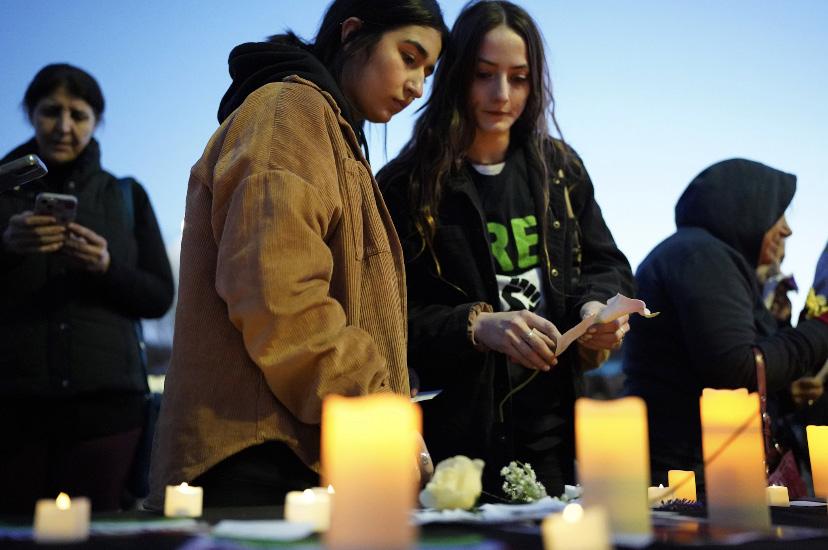
Branham wrapped its first Iran Awareness Week on Jan. 28, honoring those who have lost their lives due to the current human rights crisis in Iran and raising public awareness about the unheard voices of the oppressed people.
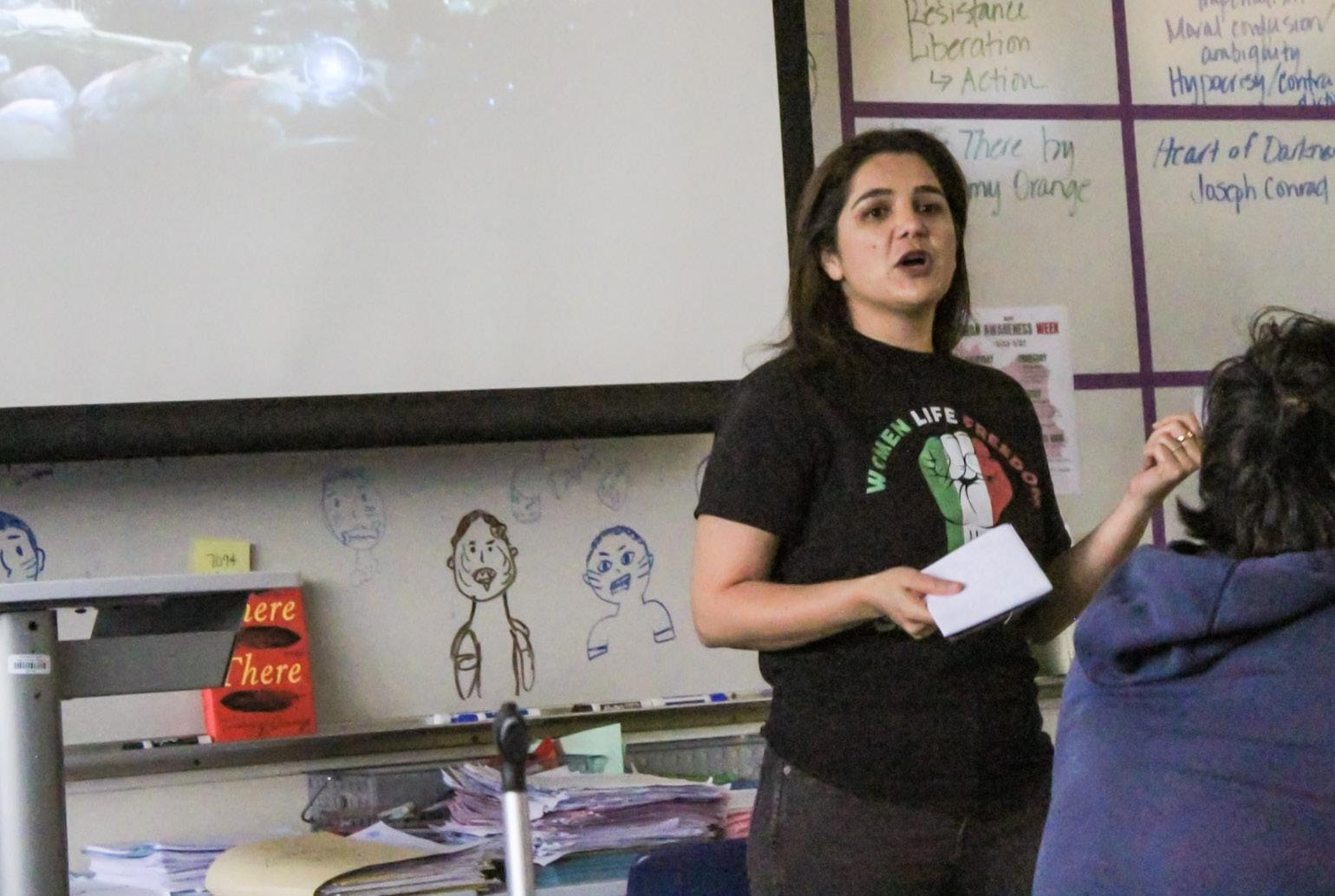

“Us Iranians face this reality that we have to live with,” said Iranian sophomore Avishawd Yarisaied.“While a lot of us still have family members in need or facing the brutality of the Iranian government.”
Organized by Tara Kaviani with the help and support from the local support group Bay Area 4 Iran and math teacher Shay Bulgarian, the school put together multiple lunchtime events such as flag painting, letter writing and a lunchtime and evening vigil in the quad.
Yarisaied said that bringing the community
together to support the conflicts in Iran makes her “indescribably grateful” for the outlets Branham has to advocate for those suffering. She also believes that this week is a testament to Branham’s emphasis on equity.
During the week, tables with posters, information brochures, pins, stickers, and ways to donate have been available at lunch in the quad.
The group Bay Area 4 Iran tabled the booths helping with the activities, even visiting classes to share presentations.
Bay Area 4 Iran is a non-affiliated group of Iranian-Americans who aim to project the voices of Iranian people around the world. By using the slogan “Woman, Life Freedom” they hope to fight for freedom, democracy, human rights, and change of the brutal regime in Iran.
Friday night there was also a vigil honoring victims of the ongoing human rights conflict in the country. The vigil consisted of a flower ceremony in which participants placed flowers on an arch with photos of the victims of the Iran government as well as excerpts from speeches and songs.
“This was one of the most heartwarming weeks of my life – I really just felt in touch with my community and my culture and my identity.” Kaviani said. “There’s never an excuse to do nothing.
I hope that there’s more tangible ways that I can help than like, bringing the community together, but I’m grateful that I have this opportunity.”
Kaviani is working with Bay Area 4 Iran to bring more awareness weeks like the one at Branham to many local high schools. Activities Director Heather Cooper said that
out of the 16 years that she has been at Branham, the Iran Awareness Week was the best-organized event she’s seen.
“As a woman, I feel like every single one of us has a story of a challenge that we’ve gone through that’s either been devastating or something that we’ve had through life.” Cooper said.
“It was just an extremely touching event that I feel brought Branham community together in some way and had a special meaning.
She hopes to create more awareness weeks as powerful as Iran Awareness Week at least once a semester, creating more tangible actions to promote difficult discussions in the Branham community.
— Compiled by Reese Gardner with reporting by Alli Wang
18 BEAR WITNESS | FEBRUARY 2023 | BHSBEARWITNESS.COM
STUDENT LIFE
Alli Wang/Bear Witness
Branham alumnus Shireen Sabouri picks up a flower to place on the flower arch at the community vigil on Jan. 27. The event featured musical performances, a candlelight vigil and prayer.
IRAN AWARENESS WEEK
Carissa Takaki/Bear Witness Sophomore Luka Thiara waves the Iranian flag he painted on Jan. 23 at a quad event honoring victims of the current Iranian government crackdown on protesters.
Alli Wang/Bear Witness Fahimeh Khaleghi speaks to English teacher Jeanine Black’s AP Literature class on her work on behalf of the group Bay Area 4 Iran, a nonprofit dedicated to
ARTS & CULTURE
Mini Reviews
MOVIE
SOLO AT CARNEGIE HALL
Dreamworks
Puss and Boots
Directed by Joel Crawford
What it is: This edition to the "Puss In Boots" series is a nostalgic yet entertaining film for all ages to enjoy. The movie traces Puss' past and present as he combats villains and his growing age.

Liked: On top of the enticing plot and comical characters, I enjoyed Dreamwork's incorporation of other fairy tale characters and elements ranging from Goldilocks to the Wizard of Oz.
Disliked: The only negative to this movie was its intensely eerie villains that seemed far too scary to be in a PG movie.
— Carissa Takaki ALBUMS
TEMPTATION TOMORROW X TOGETHER

What it is: Over eight months after their last EP, TXT released their fifth EP with the title track "Sugar Rush Ride". TXT built their own discography after being called "the younger brother group" for years with their own style, continuing that with this album as well..
Liked: TXT continues to establish their own unique style and it was well represented by this album. My favorite song is "Devil by the Window" because the lyrics reveal more about their tortured story line portrayed in their music videos.
Disliked: I was a little disappointed at the "Sugar Rush Ride" dance, especially the part when they pointed their fingers together.
— Jiyoon Choi
SOS SZA
What it is: SZA released her second studio album, SOS, on December 9, 2022 through Top Dawg Entertainment and RCA Records. Her songs "Kill Bill" and "Nobody Gets Me" from the album were one of the top 10 songs on Hot 100.
Liked: I love SZA's style and twist on R&B and her lyrics are relatable. The rhythms are catchy and her music videos are always so creative and artistic.
Disliked: It took her a long time to drop the album because a lot of songs on the album were leaked.
— Aresema Agdie
TV Night Court
What it is: The sequel to the original 1980s sitcom "Night Court," the show follows the Judge Abigail Stone, who has just landed a job at the same place her father, main character of the 80s rendition Judge Harry T. Stone, used to work at.
Liked: John Larroquette is absolutely hilarious as a coffee barista turned public defender for the second time. Larroquette's comedic timing is on point a Disliked: They're trying to be other legendary NBC sitcoms such as "Will and Grace" or "The Dick Van Dyke" show. I remember watching a couple episodes of the original sitcom, and this sequel just doesn't entirely capture the aura of the original, like most reboots.
— Ryan Walters
ALLI WANG News Editor
In the famous Weill Auditorium of New York’s Carnegie Hall, senior Crystal Mai swiftly moved violin strings as she played “ Flute concerto. in G minor.”
Mai, who has been playing violin for 12 years, was offered to perform at the world-renowned Carnegie Hall on Christmas Eve after she placed second in the American Protege Concerto Competition, the country’s largest international music contest. At the recital, she performed with 30 other winners at the two hour concert.
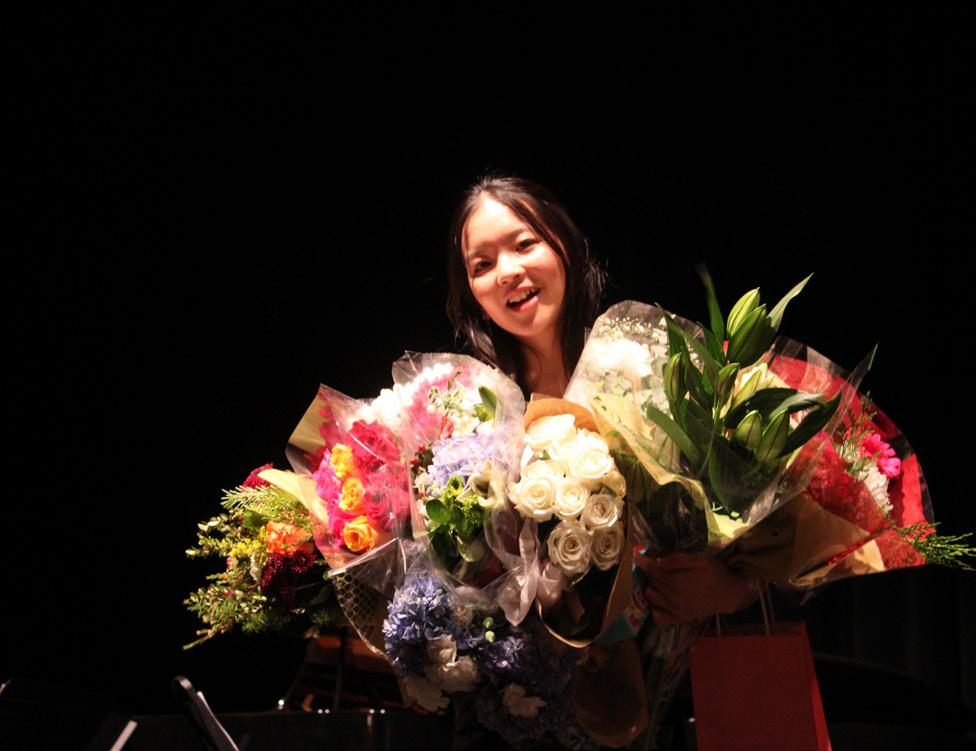
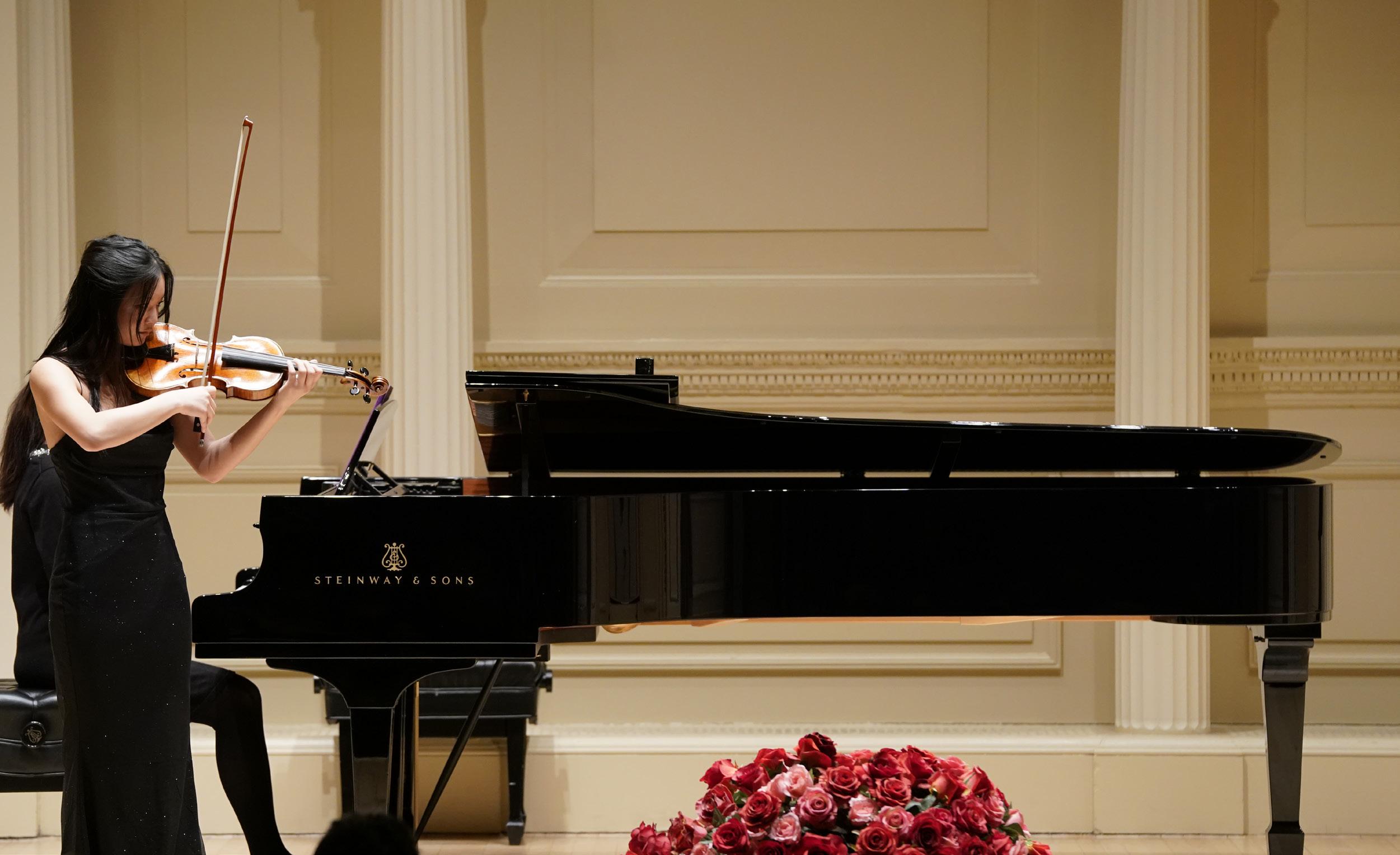
The months prior to the American Protege Competition, Mai prepared with her private teacher, Ernest Yen He said Mai has progressed in her musicality, especially in Romantic period pieces or emotional pieces.
“(When I first taught her), she had good techniques but didn't know how to express herself through the violin yet. She didn't know how to play sweetly, sadly, or joyfully before. But now she finally has more colors in her violin playing.”
He was her chamber music teacher when she was in fifth grade, but became her private violin teacher in late 2020. Yen also admired Mai’s strength in expressing the “colors” of the different emotions while playing the violin pieces.
“I think Crystal is a sensitive person, and you can tell that from the playing.”
Yen said. “I hope she can keep exploring the different colors in music playing and learn to express that through her violin.”
Yet Mai said she always had a passion for the violin since she was young, influenced by her family’s occupation of making violins. Her dad crafted violins in her house, before her family later went on to own Scott Cao Violins in Campbell.
“ I didn't have that many hobbies growing up but had an interest in music so I would always turn to play the
Priori to performing at Carnegie, Crystal Mai in December gave a performance before her friends and family at the school's Performing Arts Center.
Carissa
violin. It helped connect me with my parents especially after they started to run the violin shop and I spend a lot of my time there.”
She said she’d never imagined being able to perform at Carnegie Hall, as she had assumed that the competition was small.
“I was in the middle of orchestra rehearsal. I opened my mail and I was shaking. I was so excited.”
Mai was initially “really nervous” when performing at the famous venue, but was glad to perform along with 30 other winners at the two hour recital.
But prior to performing at Carnegie
IN ELITE COMPANY
Hall, Mai had also prepared a violin recital earlier on Dec. 1.
Yen said he gave her the goal earlier last year to host a senior recital before graduating from the senior recital, which she organized early last December. When Mai took the challenge to organize it, Yen considered it one of Mai’s best accomplishments as a musician.
“It's not an easy thing to do for college students, not to mention for a high schooler.” Yen said. “She took the challenge, worked on the program, designed the invitations and posters, booked the revenue and scheduled rehearsal with the pianist. I'm really proud that she completed this task and became a more independent student musician.
The violinist spent four months organizing her senior recital, which was entirely self-run aside from assistance from theater teacher Jennifer Sorkin. Performing with her accompanist Sylvia Kuo and featuring a duet with her instructor Ernest Yen, Crystal coordinated finding accompanists, inviting guests, and practicing for multiple months.
Although she doesn’t plan to pursue the violin professionally, she still hopes to continue playing the violin as a hobby, along with minoring in music performance and teaching violin to younger students.
“Violin is my creative outlet and way to express myself,” she said. “I never expected my passion to go this far.”
Two to perform at All-State Band concert
AVA STARK AND ALLI WANG
Staff Writers
The Wind Ensemble’s bass clarinetist Brian Garrison and oboist Andrew Kim will be among 116 students performing in California’s All-State Symphonic band, the annual showcase for top high school musicians in the state.
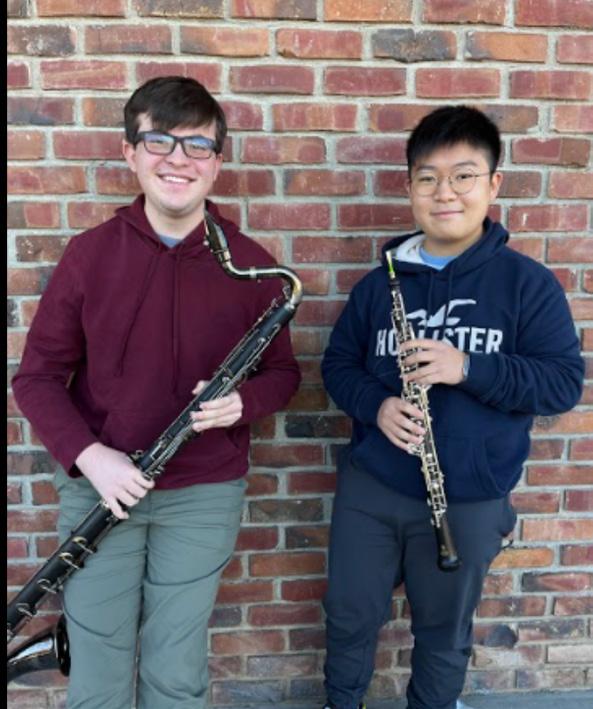
They will be joined by three other students in the district, sophomore Valerie Liou and junior Noah Roh from from Leigh, and Evelyn Wang from Prospect.
At the high school level, the California All-State ensembles are divided among categories, from Concert band, Symphonic band, Wind Symphony and Golden State Band.
Students accepted into the program will head to Fresno next week and will
be the culminating performance at the California All-State Music Education Conference Feb. 19.
Both Garrison and Kim have performed in the County Honor Band before, but this will be Garrison’s first time in the All-State Symphonic Band, and the third for Kim, who has performed with the All-State band, having performed with the junior high school group.
Garrison is looking forward to the social aspect of being a part of the AllState band.
“Just meeting people who also play at a pretty high level from different places,” said Garrison, “is pretty exciting.” Students who are accepted will attend a day of rehearsals.
“The course itself is very intensive so you learn a lot of things,” he said.
Both musicians had to submit audition videos, in addition to performing scales, a solo piece specific to the instrument must be performed. For Kim it was “Sonata No. 2” from Handel.
Garrison thought his audition piece, “Largo and Allegro” by Pietro Boni, was challenging due due to its languid pace.
“I learned how to play slower music that I haven’t really played before,” he said.
Kim hopes that he will be able to grow as a musician from this experience.
“I believe that if I learn from others too, that I myself might become a better oboist,” Kim said. “I know that music is a language to learn, so understanding and learning more about that language may help me to become a better musician.”
19 BEAR WITNESS | NOVEMBER 2022 | BHSBEARWITNESS.COM
PERFORMANCE
Courtesy of Crystal Mai
Senior Crystal Mai performed at the Weill Auditorium in Carenegi Hall after placing second in the American Protege Concerto Competition. She's played violin for 12 years.
Takaki/ Bear Witness
Bighit Music
Ava Stark/Bear Witness The All-State honor is Brian Garrison's first and freshman Andrew Kim's third.
crowded in the kitchen
students enjoy the food, mostly
Cereal “It tastes really good but not good enough to where it’s fire.“
favorites for brunch
“The cake itself is good but it’s school food. so it isn’t that great.”




The Kitchen opened in January and gave something students had not seen in school cuisine — healthy and varied choices. With the popularity of the food options comes the long lines. We break down what students like, what they love, and what they’d like changed in The Kitchen.

favorites for lunch
“It’s like playdough but it’s sugary.“
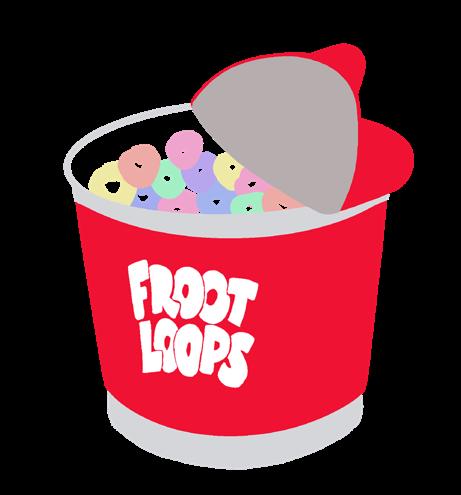
wishlist | food

Ramen
Luka Thiara (10)
Cooked rice (rice undercooked)
Maceo Inoue (11)
Chicken sandwiches
Keira Nguyen (12)
Chicken Fajitas
Hayley Duhmello (12)
Breakfast items for lunch

Maya Drake (10)
Gluten free options/gluten free pizza


Macy Collier (10)
wishlist | shorter lines

The average wait time is betwen 10 to 15 minutes. Administrators say lunch lines will improve, but with more than 2,000 students and a single lunch line, a wait time is expected.
“Everybody’s shoving into each other and it’s not really a line It’s just a clump.”
Spaghetti
Andy Marocco (9)
Suhail Haro (9)
Rebecca Kennedy (10)
Nayeli Deras (11)
Bread sticks w/ marinara sauce
Mia Borgese (11)
“I barely have any time to actually eat. It’s not worth it.”
“The line is so long that it takes the majority of lunch.”
Saria Rosintoski (10)
Saria Rosintoski (10)
Dristi Roy (9)
Naomi Bergman (10)
46% Cinnamon bun 26% Coffee cake 19% Breakfast burrito 9% Yogurt parfait 39% Chow mein /stir fy Burrito bowl 19% Pizza 9% Other THE
BACKPAGE
⭐ ⭐ ⭐ ⭐ ⭐ ⭐ ⭐ 1/2
BEAR WITNESS | FEBRUARY 2023 | BHSBEARWITNESS.COM
reporting by sahasra makamchenna, with illustrations by tae yun (erica) kang







 Illustrations by Dhatri Tummala with inking by Grace Ngo
Illustrations by Dhatri Tummala with inking by Grace Ngo
























































































